by Sam Glaser
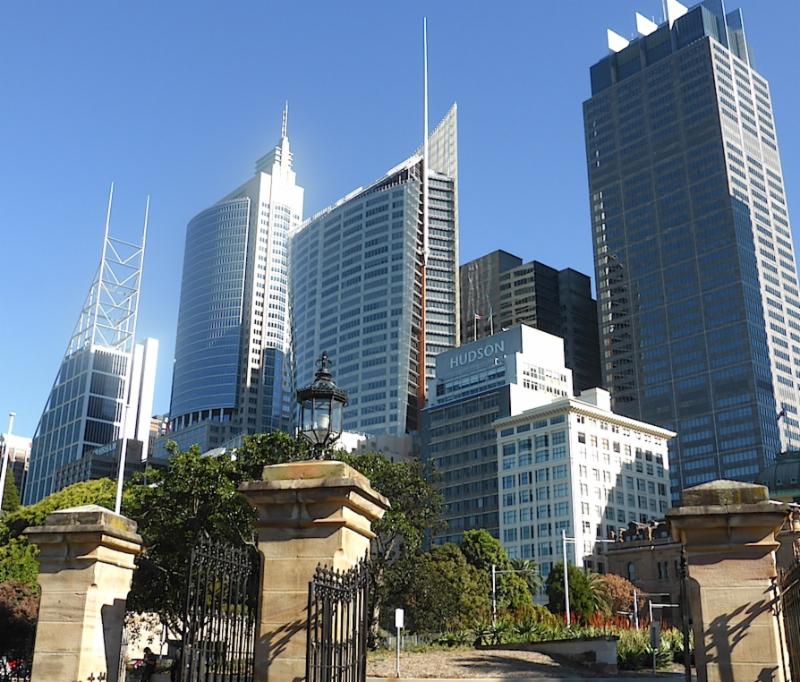 When I started out in music my primary motivation was to get my songs heard. That primal urge to offer shelter to the melodic offspring of my subconscious led me to open a recording studio, assemble bands, learn theory, practice the piano and take voice lessons. A byproduct of the career that this passion invoked is a desire to offer a path to young musicians who are wrestling with their musical inclinations. Establishing mentorship programs, music retreats and choral and instrumental ensembles is all part of this effort. As a militant music advocate I maintain that basic music education is a crucial part of any modern school curriculum. Somehow that truth seems lost on American administrators, especially in Jewish day schools. When something has to be cut to accommodate shrinking budgets it’s usually not math and English; presently music education in both public and private schools is MIA or at best, piecemeal.
When I started out in music my primary motivation was to get my songs heard. That primal urge to offer shelter to the melodic offspring of my subconscious led me to open a recording studio, assemble bands, learn theory, practice the piano and take voice lessons. A byproduct of the career that this passion invoked is a desire to offer a path to young musicians who are wrestling with their musical inclinations. Establishing mentorship programs, music retreats and choral and instrumental ensembles is all part of this effort. As a militant music advocate I maintain that basic music education is a crucial part of any modern school curriculum. Somehow that truth seems lost on American administrators, especially in Jewish day schools. When something has to be cut to accommodate shrinking budgets it’s usually not math and English; presently music education in both public and private schools is MIA or at best, piecemeal.
I just returned from a frenetic two-week concert tour of Australia. I love to be utilized fully when I come into any given town, and my Sydney agent Judy Campbell made sure that there was very little downtime. Keeping busy on the road is a good thing – that way I don’t get too homesick. What I didn’t expect was just how moved I would be by the deep connection to music down under. I found music everywhere. Nearly all my new “mates” were musically literate and most played instruments, sang and actively patronized the arts. From the guitarists in the pub to the Aborigine didgeridoo street musicians, I felt that there was a constant soundtrack to my wanderings. I’d like to dedicate this month’s newsletter to a diary of my trip and the powerful impact of an education system where music and the arts are a priority.
After months of laborious planning, June 1st finally arrived. My suitcase was carefully packed and my wife devotedly drove me to LAX, a bi-weekly ritual in our family. I had to perform a Jedi mind trick on the woman who checked in my bag. It was over 60 pounds and should have been another $120 for the overage. I beamed a friendly smile and kept asking her questions about the layover and she dutifully answered my questions while absentmindedly putting on the tags. I did a happy dance through passport control. I seem to have the same strange symptoms every time I leave town: twenty-four hours of the blues with the stress of preparing for the trip and leaving my family. Then I get to my gate and breathe, light as a feather and stoked for the journey. Sometimes I even look at myself in the airport bathroom mirror and I have to stifle laughing out loud. “On the road again…”
I slept ten of the eleven hours on Fiji Airways to Nadi, Fiji (pronounced Nandi.) I was met by a Fijian four piece, ukulele-based band happily jamming in the terminal at 4:30am. Following a second security check I prayed and did yoga in the transit lounge. Ommmm. I watched the sun come up over some green hills not unlike the windward side of Oahu…this would be my reward after two intensive weeks of concerts in Australia. Once again, I slept for most of the 4.5-hour flight to Sydney. No sleeping pill required. All I need is a window seat, earplugs, tempur-pedic pillow, slippers and the drone of the engine. The rest of the flight I worked on proofreading my new Jewish Handbook that I am so excited to be publishing soon. Surprisingly, Fiji Airways is a fine, modern airline with in seat movies and kosher meals but every seat was sold out and I was crammed in next to a fellow broad-shouldered surfer.
My hosts for the Australian Jewish Choral Festival
 (AJCF), Judy and her husband Mark picked me up and drove me straight to the festival venue so I could check out the piano and decide on any stage diagram changes. The Music Conservatorium is a modern, cutting-edge music academy with astonishing rehearsal and performance spaces and more grand pianos than I’ve seen under one roof. I was excited to see that I would have a perfectly tuned Steinway concert grand for my show. Pianos like that simply suck the notes out of my fingers. Playing them is effortless, with dynamics that range from floating through a wispy sky to crashing cumulo-nimbus thunder.
(AJCF), Judy and her husband Mark picked me up and drove me straight to the festival venue so I could check out the piano and decide on any stage diagram changes. The Music Conservatorium is a modern, cutting-edge music academy with astonishing rehearsal and performance spaces and more grand pianos than I’ve seen under one roof. I was excited to see that I would have a perfectly tuned Steinway concert grand for my show. Pianos like that simply suck the notes out of my fingers. Playing them is effortless, with dynamics that range from floating through a wispy sky to crashing cumulo-nimbus thunder.
The Sydney afternoon weather was breezy with bright blue skies following the morning rain and the impressive downtown area was fresh and shining. Mid-June means mid-winter in this part of the world. We took a walk around the Royal Botanical Gardens and the imposing Government House built in 1837. Children on field trips from their respective private schools were decked out in coats and ties and in the case of the Muslim academy, headscarves. These outfits didn’t stop them from happily rolling on the grass and climbing all the statues and trees. Eventually my gracious hosts nudged me back to the car to head to the North to get ready for my Shavuot late night learning program. A habit I would repeat every time I got to the car: I would head to the front passenger door on the right side and my drivers would patiently say, “No, Sam, wrong side. Again.” It’s a tough adjustment to sit in the US version of a driver’s seat when there’s no steering wheel or brake. Especially when entering yet another roundabout. The same traffic patterns are in force on sidewalks: one passes on the right and no, it never feels normal.
I met my hosts for the Shavuot holiday, Rabbi Gary and Jocelyn Robuck and two of their college age kids, Shoshie and Aaron. They have a spacious, modern home that they custom built right next to their synagogue and now are selling since the proximity is making them feel claustrophobic. The shul dinner was excellent, prepared by Jocelyn and Pauline, both ex-caterers, and the singing around the table was inspired. I marveled at how temple members were so musical…it was only later that I found out that the dinner was primarily for the Temple choir! Soon we adjourned to the elegant, recently renovated sanctuary for the evening service. I opened the proceedings with my V’haer Eyneynu in honor of Shavuot and closed with Blessing. I felt such a sense of gratitude from this congregation; this community uses my music throughout their davening and I received a hero’s welcome. Rabbi Gary is also a chazzan and he and the 25-voice choir try to mix up traditional music with new songs from throughout Diaspora to keep things interesting. And it wasn’t just the choir that was singing; as soon as the rabbi would feature a well-known song, everyone assembled chimed in with spirited abandon.
I led a two-hour “How to Observe the First of the Ten Commandments” workshop plus some additional Shavuot insights. Shavuot is the holiday that seemed to be left out of the Hebrew School syllabus as I grew up. Now I feel like it’s my personal discovery. I did my best to inspire the congregation into sharing my enthusiasm for this anniversary of receiving the greatest bestseller of all time from the Creator of the Universe. By the time midnight was drawing near I started to lose focus…jet lag was hitting hard. Thanks to adrenaline and the open miracle of a second wind I was able to keep my head together and even deliver a semblance of a conclusion that wrapped up all my points. As we walked back to the house the rabbi queried, “At what point did you achieve a sense of certainty in your belief in God?” That comment got me thinking. Certainty is a big word, one that I haven’t entertained. Yes, I suppose I am certain about God. I perceive God’s hand in the world and in my life everyday and evidently that clarity informs my lecture style. Then the rabbi brought up the Holocaust as a typical stumbling block for most, launching us into a late night theological odyssey.
I opted not to go to shul the next day, grateful that I wasn’t programmed to lead the services. I slept a luscious, deep sleep and then davened on my own by the pool under the eucalyptus in their spacious backyard. After a hearty breakfast I headed out on an ambitious bushwhacking expedition. Long ago realized that my favorite way to travel is to get as far from the city as quickly as possible. Give me bush! Back in LA I had printed a Google map of their Chatswood neighborhood so that I could reach a trail that I imagined would be in the “green area” by the bay a few miles from their home. One thing you can’t tell from a Google map is the topography…sure enough that green area on my map was a steep, dense rainforest that plunged down into a river valley below. No trails, no access. Just as I was about to give up hope in finding a proper path I saw a turnoff to the North Arms Reserve. Bingo.
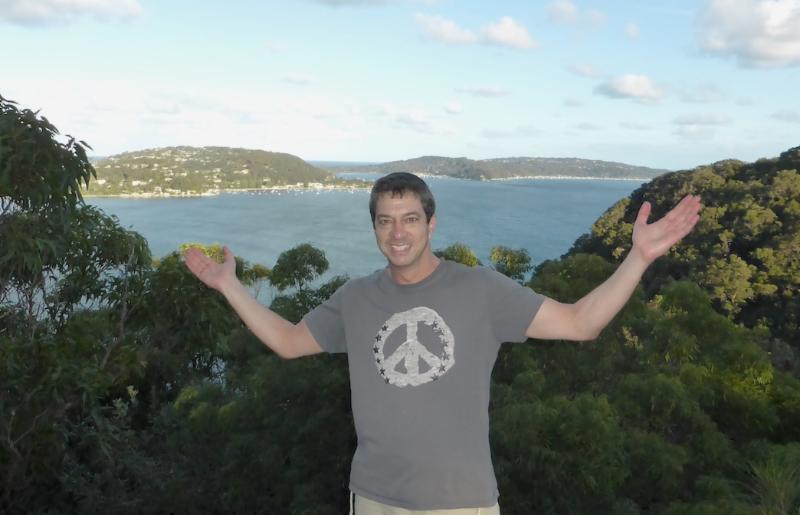 I launched on a shaded trail to a beautiful fishing spot in the middle of Sugarloaf Bay. I saw countless exotic birds including trees filled with brilliant parrots, rainbow lorikeets, cockatoos and these crazy crested pigeons. I felt like I was on the set of Avatar, and the complete solitude of the path made me a bit concerned that some wild Pandora beast would come raging through the fern undergrowth. At the terminus I watched a recently retired 51-year-old banker casting his reel for Australian Salmon. He said that they taste nowhere near as good as the Tasmanian variety. Over twenty years working for the same bank and this ex-executive was feeling like he was on the set of Groundhog Day. He felt he had barely escaped with his soul intact…fishing time! We had a relaxed schmooze for a few hours as I ate my bagel, lox and cream cheese Yom Tov seudah (festive meal.)
I launched on a shaded trail to a beautiful fishing spot in the middle of Sugarloaf Bay. I saw countless exotic birds including trees filled with brilliant parrots, rainbow lorikeets, cockatoos and these crazy crested pigeons. I felt like I was on the set of Avatar, and the complete solitude of the path made me a bit concerned that some wild Pandora beast would come raging through the fern undergrowth. At the terminus I watched a recently retired 51-year-old banker casting his reel for Australian Salmon. He said that they taste nowhere near as good as the Tasmanian variety. Over twenty years working for the same bank and this ex-executive was feeling like he was on the set of Groundhog Day. He felt he had barely escaped with his soul intact…fishing time! We had a relaxed schmooze for a few hours as I ate my bagel, lox and cream cheese Yom Tov seudah (festive meal.)
I returned back a different way now that I had the aid of some maps that were posted on the trail. All told I was gone for six hours and I think I covered at least eight sweaty miles over ambling terrain. After mincha and a good shluf (nap) I enjoyed Yom Tov sheni dinner with the Robucks and an animated Hungarian couple. First course was fruit cocktail and second course was three pieces of butternut squash tortellini and a salad. Elegantly prepared and tasty but I must admit I was surprised when the next course was dessert! I made up for the void with mouthfuls of challah. Once again we did a musical benching and then I enjoyed a mikvah with the rabbi in their percolating hot tub by the pool.
The following morning I accompanied Rabbi Gary on a three-mile walk to a neighboring shul. Temple Emanuel is what they call “Progressive” in these parts and therefore doesn’t hold by two-day holidays. We found the vast North Shore Synagogue sanctuary nearly empty and those assembled were very glad to see us. Some of the choir members recognized me from my poster and insisted that I join them. I think there were more of us on the bimah than in the congregation! I faked my way through the various tunes that they employ for the Torah service and mussaf and marveled that I could be 10,000 miles from home, singing with strangers and yet still know most of the tunes. Following a spartan Kiddush we were invited to Rabbi Paul Lewin’s home for lunch. Both the rabbi and cantor of the shul have five children. All were in attendance, which meant that I spent as much time on the floor horsing around as I did at the table. Thankfully what looked like an impending storm didn’t deliver the goods until we were walking the final block of our long trek back to Rabbi Gary’s house. That said, we came home wet and well nourished.
When I awoke from my much-needed nap I watched the Emanuel choir rehearsal and enjoyed my new friend Judy Campbell’s sensitive conducting. Then when the Yom Tov ended I led havdalah and was picked up by one of the altos in the choir, Naomi Jandausch whose job was to escort me to enjoy “Vivid Sydney.” Naomi was excited to tell me that she had walked down the aisle to Believe in Me from my Presence album. She was enthusiastic company and my first time seeing Vivid was such a treat! Can you imagine that they decorated all the landmarks downtown with wild light shows in honor of my trip? I was so grateful for the good timing…one month every year Sydney lights up on weekends. Innovative images are projected onto scores of downtown buildings accompanied by evocative electronic music. Tens of thousands of colorful locals wander the streets to enjoy the sensation and of course, the mass of humanity creates a carnival atmosphere. The highlight was the vast projections cast over the harbor to the iconic Opera House. Naomi and I walked until we couldn’t walk anymore, shot plenty of pictures that will likely not come out and then found one of the few establishments where this kosher consumer could eat. I sent sleepy Naomi home since I was fired up with energy to explore more of the town. Thanks to an excellent light rail system I felt perfectly confident that I could find my way back to Chatswood.
walked until we couldn’t walk anymore, shot plenty of pictures that will likely not come out and then found one of the few establishments where this kosher consumer could eat. I sent sleepy Naomi home since I was fired up with energy to explore more of the town. Thanks to an excellent light rail system I felt perfectly confident that I could find my way back to Chatswood.
One of my primary objectives that night was to sample a pint of the local brew. I stepped up to one of the many pubs that I found on nearly every downtown block and asked for advice on a local lager. By my third round I nailed it! Coopers with a few limes. I found a group of musicians to hang out with and they soon became my “mates.” Thanks to a recent wave of bar brawls there is a new curfew in effect so when the pub emptied shortly after midnight I walked towards the Central Railway station. When I stopped for directions a friendly Indian man said, “You don’t want to walk through the park, my friend. You’d better go back to the Town Hall station.” Grateful for his advice but reluctant to shlep even another few feet, I traipsed up the hill to Town Hall to find that the last train had left the station. Oy! Thankfully there were night buses that trace the train routes, only I had just missed the 12:30 bus. OK. More wandering for a half hour and then a bus ride and a dark twenty-minute walk to my host’s home. Great night!
I awoke bright and early to daven and then was escorted by the ever-able office manager Pauline Lazarus to the supermarket in St. Ives since it sports a well-stocked kosher section. Australia does not enjoy the plethora of hechshered (kosher symbol) products that we do in the US. One is forced to stick with the limited inventory in the kosher aisles, much of which is imported from the US and Israel. Thankfully they did have an ample kosher bakery. I filled the cart with food for the week as I was moving into an apartment hotel in downtown Sydney, Woolloomooloo, to be exact. Then off to meet my Sydney band, hand-picked to perform with me on this trip. I was thrilled to find that these five musicians were of the highest caliber and had come to the rehearsal ready to rock on all my songs. We also had a three-voice background vocal section consisting of Josh Robuck, the rabbi’s talented musical theater-trained son, Judy Campbell and adorable voice teacher Andrea Catzel. We slogged through the details of the set and then munched on falafel with all the trimmings. Over the course of this two-week tour I would be followed by a two-camera crew documenting the experience. I am grateful to Chris and Dean who were on hand catching every note and emotion of the extensive rehearsal.
Judy then drove me to my downtown hotel which featured huge windows with a view of skyscrapers, two king size beds, fifteen-foot ceilings and a full kitchen. She then handed me a wad of colorful Australian cash that would be my thirteen-day per diem. Nice! I was one of three conductors invited to take part in the Australian Jewish Choral Festival (AJCF) and one of my cohorts, Boston-based Josh Jacobson was staying in the room above me. I had to do some fancy footwork with the office staff to work out how to get in and out of the building over Shabbat. Alarms and keypads were plentiful and just getting in the building required a swipe of an electronic card. After a thorough explanation of the obstacles to my observance the good-natured manager gave me the master key to the building! I could enter through the car park when a car came in and never have to worry about the front door or emergency exit. See…you just have to ask!
I scrambled to get everything in place for Shabbas and then went upstairs to enjoy a delicious dinner with Josh and his spunky wife Rhonda. We nurtured our fine Cabernet and enjoyed the city lights while we discussed music, travel and several rounds of Jewish geography. Of course we did plenty of three-part z’mirot singing! After Shachrit the next morning I seized the day to have a walking tour of this amazing city. Under blustery blue skies I walked first to the incredible New South Wales Art Gallery. Built in 1871, this is one of the most beautiful museums in the world inside and out. I wandered every single room, taking extra time at the canvases of Australian artists with whom I was unfamiliar. I then ventured across the hundred acres of perfectly maintained grass known as The Domain and found myself at the State Library of New South Wales. A spectacular multistory nineteenth century room held books up to the rafters, replete with rolling brass and walnut ladders for access. On the top floor I enjoyed a Canon-sponsored exhibit of the top press photographs of the year.
By the time I made it to bustling harbor side Circular Quay (pronounced “key”) I was tired and thirsty. Who knows how many miles I had put on at that point in the day! There, overlooking the ferry wharfs was a perfectly situated pub with outdoor seating and great rock and roll on the PA. If only I had some cash! Well, as I’ve mentioned, you don’t get what you don’t ask for. I stumbled up to the bar and asked the young, blonde bartender for a pint. And then I told him, “but thanks to the Jewish Sabbath I have no money.” He replied politely, “well, then, I don’t think I can help you.” He then asked if this Sabbath thing had anything to do with Ramadan. “No!” I replied, “the Sabbath is the way Jewish people take a break from acts of creativity every week. We step back from the canvas of our lives to appreciate the work of the Creator and not engaging in commerce is one of the ways.” He pondered that point, looked this way and that, and poured me a glass full of that delicious Coopers ale. Yum!
I took my pint to a nearby table filled with upscale young people enjoying the day. One woman spotted my kippah and said, “Oh, you’re Jewish! Shabbat Shalom!” She then gushed how much she loves Jews, how she’s traveled in Israel and is certain we are the Chosen People. She then rolled up her sleeve to show me that Isaiah 53 was tattooed up her forearm. As we laughed and nursed our pints she and her friend made sure mine was never empty. By the time I got to the Contemporary Art Museum I was less steady on my feet but perhaps more open to appreciating the wild assortment of images, films and sculptures. Another great coincidence arranged for my Shabbas explorations was that this week in June marked the “Bienniale of Sydney” anniversary and all the museums were free! The theme of this year’s festivities was a prophetic phrase emblazoned on many buildings: “You Imagine What You Desire.”
I took the long way home via the amazing Opera House and Botanical Gardens and then after mincha-maariv prayers got a ride to the Music Conservatorium for the opening of the AJCF. I
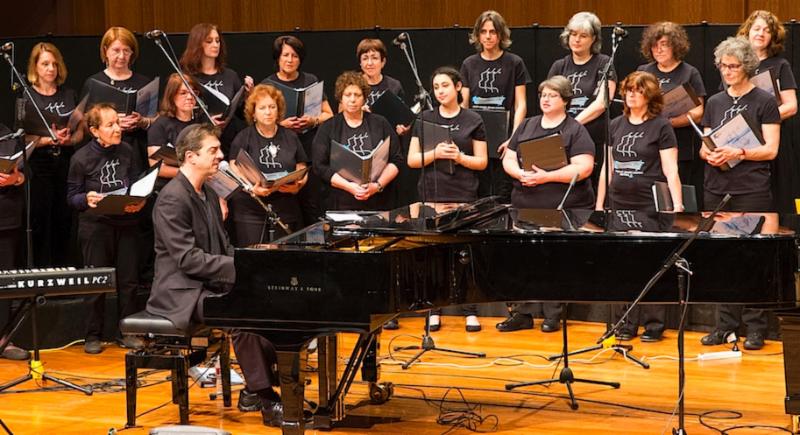 started the proceedings with a rousing havdalah and sing-along. Now I would be put to the test. The eighty candidates assembled had notebooks with several of my SATB arrangements. For the next sixty hours I would conduct the whole group in “Big Sing” rehearsals, form my own twenty-five voice Rock It Choir, teach workshops and give concerts both for the group and a gala show for the public. I must say that conducting the first song that Saturday night was nerve wracking. I started working on the parts section by section and soon surrendered to the joy of hearing my music sung. At first I waved my hands stiffly but then closed my eyes and “saw” their entrances in my heart rather than on the page. By the time we had my Blessing song down I felt enveloped in a sonorous angelic wind that responded to my every gesture. Wow.
started the proceedings with a rousing havdalah and sing-along. Now I would be put to the test. The eighty candidates assembled had notebooks with several of my SATB arrangements. For the next sixty hours I would conduct the whole group in “Big Sing” rehearsals, form my own twenty-five voice Rock It Choir, teach workshops and give concerts both for the group and a gala show for the public. I must say that conducting the first song that Saturday night was nerve wracking. I started working on the parts section by section and soon surrendered to the joy of hearing my music sung. At first I waved my hands stiffly but then closed my eyes and “saw” their entrances in my heart rather than on the page. By the time we had my Blessing song down I felt enveloped in a sonorous angelic wind that responded to my every gesture. Wow.
The next day would prove to be one of the craziest marathon days in my career. I’m wondering how the coordinators of the conference thought that anyone could pull it off! I find that the rehearsal is often more exhausting than the actual show. Try five rehearsals back to back, plus a workshop with a men’s synagogue choir that was looking to me for advice with their technique. (Just sing in tune, boys!) At one point, Judy saw my frazzled state and said, “Why don’t you just walk with your choir down to the park and rehearse by the water?” Great advice, indeed. We walked to the waterfront at Farm Cove, formed a semi-circle and sang our repertoire, and then some. Soon a crowd gathered and that awakened the “ham” in these Jewish ladies. We segued from Israeli repertoire into Waltzing Matilda and Amazing Grace and then got the crowd to join us for some acapella Israeli folk dancing. We were particularly touched that some German tourists were in on the fun.
By the time my sound check/rehearsal for my big public concert arrived, I was fried. Nothing left. I got through a few tunes with the band but was having technical difficulties with the sustain pedal of my keyboard set up alongside the Steinway. I had sweat through my clothing and was barely able to be gracious to the hardworking sound guys and my patient band. Since this concert was being recorded with a multitrack setup there was also pressure to get good levels. At 7:40pm before my 8pm, show I turned to my benevolent handler, David and said, “I have to get into a shower, any shower, now.” I abandoned the sound check…what would be would be. David escorted me to a backstage green room and pointed out the shower. Oh, the pleasure of a powerful blast of hot water! I used the liquid soap from the sink and dried off with paper towels. It never dawned on me how hard it might be to dry the center of one’s back with a small paper towel. Still somewhat wet, I put on my stage clothes and arrived backstage as they were announcing the band. We put on a great show, all things considered. Thank God my voice held out, the choir was effervescent and I was told the mix in the acoustically perfect room was excellent. Sold plenty of CDs too!
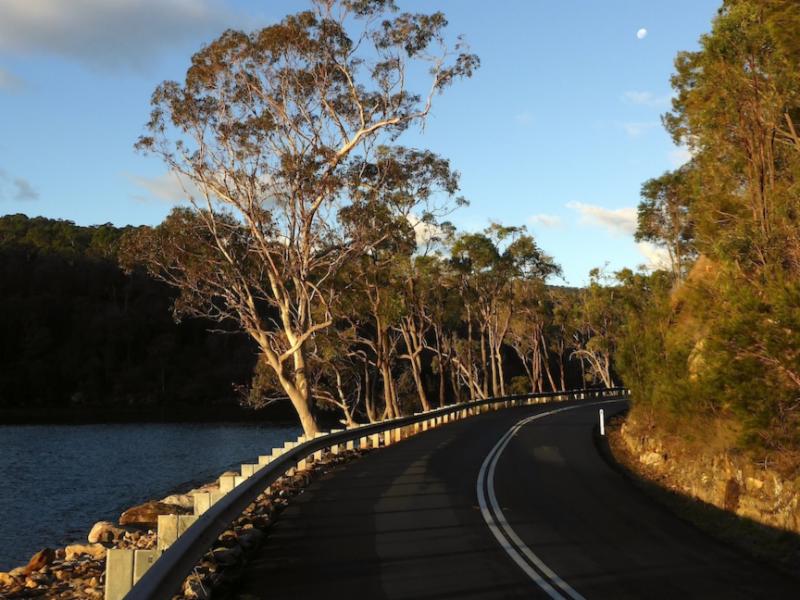 The next full day had more of the same: choir performances, rehearsals and workshops, culminating in a concert that was staged mostly for our own group and friends. We all felt a combined sense of satisfaction and relief, amazed at what we were able to accomplish in two and a half brilliant days. I had made a personal commitment to be there 100% for the festival and did not attempt to sneak out when my presence wasn’t necessary. That said, when it ended, I left the final cocktail hour with a few of my choir members to enjoy the parts of Vivid Sydney that I had missed. One of the grand illuminated buildings we passed required a human conductor to set the pace for the extraordinary light show. We boarded a ferry and got an aquatic view of the Opera House and downtown ablaze with colors intensified by the reflections on the water. Then to Darling Harbor where a Bellagio hotel-style fountain display was paired with a holographic film projected on a wall of mist. Right in the middle of the show the rain came down but no one left! Hundreds of umbrellas immediately opened providing shelter for all. These Sydneyites come prepared! Half the crowd was Asian; I was told by a cab driver that their population has swollen to a half a million residents in recent years.
The next full day had more of the same: choir performances, rehearsals and workshops, culminating in a concert that was staged mostly for our own group and friends. We all felt a combined sense of satisfaction and relief, amazed at what we were able to accomplish in two and a half brilliant days. I had made a personal commitment to be there 100% for the festival and did not attempt to sneak out when my presence wasn’t necessary. That said, when it ended, I left the final cocktail hour with a few of my choir members to enjoy the parts of Vivid Sydney that I had missed. One of the grand illuminated buildings we passed required a human conductor to set the pace for the extraordinary light show. We boarded a ferry and got an aquatic view of the Opera House and downtown ablaze with colors intensified by the reflections on the water. Then to Darling Harbor where a Bellagio hotel-style fountain display was paired with a holographic film projected on a wall of mist. Right in the middle of the show the rain came down but no one left! Hundreds of umbrellas immediately opened providing shelter for all. These Sydneyites come prepared! Half the crowd was Asian; I was told by a cab driver that their population has swollen to a half a million residents in recent years.
After the show we got a bite to eat and then the ladies headed home, leaving me to audition an Australian version of an American top-40 band and then on to a Woolloomooloo Irish pub where a trio sang gruff Irish folk songs. The bartender/owner took personal pride in demonstrating the nuances of the beers on tap and the finer points of World Cup soccer on the TV. As the hour grew late I made one more stop at a lively establishment on the block of my hotel where rowdy twenty-somethings were gathered around a jukebox singing at the top of their lungs. Yes, they still have jukeboxes!
 Tuesday was my one and only day off during this two week tour. I was excited for an extensive hiking tour of the renown Blue Mountains. Sure enough, I cranked open my floor to ceiling blinds to see that it was pouring rain. I caught the train to the North to meet Judy’s husband, sax man Mark Ginsburg at the Linfield station where we took shelter from the drizzle under the awning of an amazing coffee joint called Café Feoh. These Australians sure take their coffee seriously! When Sydney-based Cantor Shimon Farkas came to LA before Passover I offered to meet him at Coffee Bean. He said, “No, I’m going to take you to a place in Beverly Hills that serves REAL coffee.” Well, I was slowly becoming an aficionado and can safely say that that morning’s mocha was the best I’ve ever had. No sugar required! We walked back to Mark’s home while the clouds dissipated and played some groovy piano-soprano sax improvised meanderings and then boarded his zippy Audi Quattro for West Head. This would be a more coastal (and hopefully drier) version of the hike we originally planned. We wound through a gorgeous wilderness area taking care not set off any photo speed traps on the way. I wouldn’t survive a town with such tightly controlled traffic enforcement! We then embarked on a five-mile loop that followed bluffs to beaches and featured caves and ancient kitchens with aboriginal art.
Tuesday was my one and only day off during this two week tour. I was excited for an extensive hiking tour of the renown Blue Mountains. Sure enough, I cranked open my floor to ceiling blinds to see that it was pouring rain. I caught the train to the North to meet Judy’s husband, sax man Mark Ginsburg at the Linfield station where we took shelter from the drizzle under the awning of an amazing coffee joint called Café Feoh. These Australians sure take their coffee seriously! When Sydney-based Cantor Shimon Farkas came to LA before Passover I offered to meet him at Coffee Bean. He said, “No, I’m going to take you to a place in Beverly Hills that serves REAL coffee.” Well, I was slowly becoming an aficionado and can safely say that that morning’s mocha was the best I’ve ever had. No sugar required! We walked back to Mark’s home while the clouds dissipated and played some groovy piano-soprano sax improvised meanderings and then boarded his zippy Audi Quattro for West Head. This would be a more coastal (and hopefully drier) version of the hike we originally planned. We wound through a gorgeous wilderness area taking care not set off any photo speed traps on the way. I wouldn’t survive a town with such tightly controlled traffic enforcement! We then embarked on a five-mile loop that followed bluffs to beaches and featured caves and ancient kitchens with aboriginal art.
We returned just as darkness fell. Sunset in LA mid-June is about 7:45pm. Here it’s at 4:30! One must plan their day in outback carefully during the Southern Hemisphere winter. Back at the Ginsburg home we jumped into their Jacuzzi perfectly situated on a back deck overlooking the bush. Following a few beers and good conversation we dined on tuna sandwiches (keeping kosher isn’t always glamorous!) and I boarded a train back to the city. I went straight to Town Hall and enjoyed a brisk walk along popular George Street up to the harbor. I shot some glowing night shots of skyscrapers and the Harbor Bridge and then continued up to the tip of the peninsula where the Opera House holds court. What good fortune that on my free night my childhood keyboard hero Chick Corea and vibes master Gary Burton were playing this storied venue. I got in line for tickets and overheard the attendant stating that there were only a few seats left in the nearly 6000 capacity hall. It dawned on me that if Chick were playing in LA he would barely fill a 200 seat club and the place would be half empty for the second set! There was a woman in line next to me and I nodded that she could go ahead. She responded that she wasn’t there to buy a ticket…she had one to sell. I told her, “well I need one ticket!” She said, “ok, is half price alright?” I picked up the ticket for $50 and she said, “you’ll like these seats…you’re in the stalls.” From that description, as far as I knew, I was over by the bathrooms. But when I presented my ticket to the usher he marched me down to the third row, right in front of Chick’s keyboard. Yes, God loves me!
Chick and Gary played a set of epic instrumental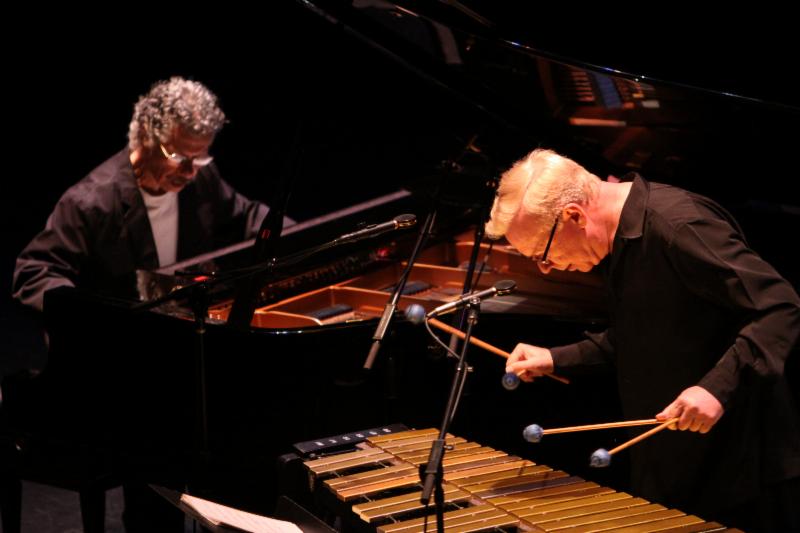 synchronicity that left the audience breathless. I noted that the crowd was the best behaved that I had ever seen. No catcalls, no standing ovations, just polite, warm applause all night. I befriended the blokes around me and they made sure that I had a beverage at intermission and wouldn’t accept my money. After the show I walked along the waterfront to the Opera House bar where I met members of the Swiss thrash metal band Coroner who were on tour down under. No, I had never heard of them either. It’s remarkable what nice guys they were given that they blast death rock for slamdancing skinhead crowds as a matter of habit. I took the train to my hotel via the nightspot Kings Cross, the closest stop to Woolloomooloo. At this late hour, on a Tuesday night, there wasn’t much action except for hash-smoking backpackers lighting up outside their hostels. That night I turned on the TV for the first time. Plenty of Australian shows with amusing Australian commercials. Nice to see that there is significant broadcasting base of home-brew content and that Aussies are not dependent on Hollywood for entertainment. That said, most of the typical American fare could be found for those homesick for Yank accents.
synchronicity that left the audience breathless. I noted that the crowd was the best behaved that I had ever seen. No catcalls, no standing ovations, just polite, warm applause all night. I befriended the blokes around me and they made sure that I had a beverage at intermission and wouldn’t accept my money. After the show I walked along the waterfront to the Opera House bar where I met members of the Swiss thrash metal band Coroner who were on tour down under. No, I had never heard of them either. It’s remarkable what nice guys they were given that they blast death rock for slamdancing skinhead crowds as a matter of habit. I took the train to my hotel via the nightspot Kings Cross, the closest stop to Woolloomooloo. At this late hour, on a Tuesday night, there wasn’t much action except for hash-smoking backpackers lighting up outside their hostels. That night I turned on the TV for the first time. Plenty of Australian shows with amusing Australian commercials. Nice to see that there is significant broadcasting base of home-brew content and that Aussies are not dependent on Hollywood for entertainment. That said, most of the typical American fare could be found for those homesick for Yank accents.
I had made plans early Wednesday morning with chorister Antony Milch who promised me a kayak adventure at dawn. His day job is working as a psychiatrist and as we paddled through the sunrise over chilly Balmoral Bay he told me some of the harrowing work he does with broken and abusive families. Kayaking is his escape. He had all the requisite waterproof gear for me to enjoy the incredible scenery without suffering and we made it to a lone beach with a prominent rock to climb for an imperial view of a fading rainbow. Thankfully we were in double kayak so when my arms were giving out after an hour of paddling I left it to him to retain our momentum. Upon stashing the craft back on his car we headed up to St. Ives where I had a performance with the students of Masada grade school. I first worked with about 200 kids in the younger grades and then a second workshop with the older students. Then we put on a show for the whole student body with the kids joining me on vocals. I loved hearing their accents on my songs, particularly the “repeat after me” verses of Unbreakable Soul. I felt like I was feeding in an American accent and I’d get the Aussie version at the other end of the machine. The kids were respectful and somewhat awestruck. When I finished I joined the crowd on the floor and was literally mobbed by hundreds of kids wanting a high five. What fun!
Judy and Mark invited me to join Josh and Rhonda Jacobson for a delicious Chinese dinner to celebrate the Jacobson’s last night in town. We were joined by Helene and Tony Abo who wanted to get in on the festivities since Tony had gone to elementary school with me before his family moved to Sydney. Following our feast I sought out some jazz in town. For such a musical place with so many musicians, Sydney is way under gunned in terms of live concert venues. I heard a few singer-songwriters in pubs and a few cover bands, but there is no “scene.” This town needs a 6th Street or Frenchmen Street badly! I did find Club 505 on the web which was only a few miles from where we were dining. About twenty jazz fans were enjoying the vocal stylings of Lionel Cole, Nat’s nephew. A fine jazz trio backed him up and he took us through an eclectic songbook of jazz and pop standards with just the right amount of twist to make them interesting. At the break I schmoozed with the players at the bar: they all knew the musicians from my local Sydney band and Lionel promised to come by my studio when he came back to LA. In the meantime, he was perfectly content living half the year in the Paddington suburb of Sydney. I think he enjoys being the only African American for miles and has found a great niche for his music and humor.
Early Thursday morning Judy picked me up for yet another school where I was to meet with high school musicians interested in learning about music career choices. I gave the Mt. Sinai class the standard line I give young people when they come by my studio looking for connections: it’s a tough business, and it’s getting tougher every year. That said, it is so fulfilling doing what you love for a living. So do what you love! Be the best in your niche. Nail your instrument, let your voice soar, get your music recorded, always be ready to deliver when opportunity strikes. Some of the girls sang for me…undeniable talent in this town! I performed a rowdy school-wide assembly concert and then Judy rushed me out to grab a quick bit to eat so that we would have time for a hike in Galston Gorge.
We stopped at nearby Katzy’s restaurant in Bondi, one of the only fleishig places in the city. As I ordered my mix grill shwarma I heard a familiar voice next to me. I peered around his shoulder…sure enough…my dear friend David Wolfe from Virginia Beach, VA. Here in Australia. The only other customer in this restaurant 13,000 miles away from his home. I had just emailed him the week before about the upcoming High Holidays where I will be returning to serve as chazzan in his synagogue. And here he was with an answer, in person! Amazing. His wife Helen came down to the restaurant when she heard I was there. The Wolfes have one of the only kosher homes in Virginia Beach so needless to say, we’ve become close! David’s sister lives in Bondi and he’s here for a week visiting…and now the whole mishpocha is coming to my show Saturday night! After our reunion meal, Judy and I drove an hour north to the gorge, a wild hairpin road through the bush with a three space parking area at the base of the canyon. It took us a few attempts to find a proper trail but we eventually wound up on a leg of the Great North Walk, which winds over a hundred miles from Sydney to Newcastle. As kookaburra hooted overhead we explored the misty Australian Blue Gum forest and shared our stories. Nothing like a good hike to connect with a friend…this was the first time I caught Judy without twenty details on her mind.
We arrived at the Galston Gorge retreat just as the sun became a infernal ball of magenta on the tree-lined horizon. 120 high school kids from the Emanuel School were in the midst of an activity-filled music camp week at this beautiful, rustic setting. Of the 800 students in the institution, 200 are musicians. The school employs a full time staff of five music teachers and twenty-two part time specialists to handle their instrumental and choral needs. They have jazz bands, classical ensembles, choirs and rock bands, with stiff competition to get a chair in the elite groups. All this and I can barely get a half a dozen musicians to show up for the high school jazz ensemble I lead back in LA. And my position is at risk of elimination due to budget cuts. The difference in our continents is staggering, and our US students are suffering as a result. The benefits of music to the developing mind and mentality are well documented. The resulting cohesion and discipline acquired by participating in such a group is difficult to achieve in any other educational format. Not to mention the joy of having a lifelong skill on an instrument and a deeper appreciation for music of all genres. Don’t get me started.
I was scheduled as the official concert entertainment during their free night. After devouring a deli dinner they brought for me (sparing me the cafeteria slop) I quickly worked with members of the top jazz band and assorted teachers and found multiple places to integrate them in my show. I also heard that the Jr. choir had mastered Feeling Groovy and Uzi Svika Pick’s Shema Yisrael so of course I featured (or shall we say embarrassed) them. The students packed the house, the musicians nailed their parts and their in-house soundman did a masterful job with my mix. Thankfully Mark Ginsburg was on hand with his sax and his video camera. As is my custom, I finished off my hour plus set with a rowdy hora that culminated in a sweaty mosh pit that left their teachers wondering about my sense of responsibility. All the adults finished off the night with an fireside hang in the faculty lounge. I seized the opportunity to learn about the music program and how it evolved. While we sipped fine wine we listened to old school Australian jazz records on an audiophile NAD stereo system that the soundman schlepped to camp. A perfect end to an amazing day.
Friday morning I awoke after too short a night of sleep, prayed, showered, shaved, packed my bags and loaded up Judy’s car for my final school show. Thank God this was just a twenty-minute mini show at the K-12th Grade Moriah College near Bondi. I watched in awe as my warm up act, a fifteen-piece middle school jazz band, performed Rock Around the Clock replete with a choir and dancers. Then the principal aired my Dancing in Jerusalem YouTube video which the kids had been enjoying since Yom HaAtzmaut. The 300 middle schoolers sang the chorus at the top of their lungs when the principal announced, “And now all the way from Los Angeles, our big surprise, Jewish rock star Sam Glaser!” The kids were shocked to see me amble out on stage and lead them in the song with the soundtrack playing behind me. I then regaled the suit and tie-wearing youngsters with rowdy versions of Shabbas, Sukkah’s on Fire, Unbreakable Soul and Uvenei Yerushalayim. Had they not been so elegantly dressed I would have stage dived.
After the assembly a music teacher gave me a tour of the two fully equipped music labs, recording studios, orchestra halls and practice rooms. Another jaw-dropping musical moment as I heard melodious cacophony in every hallway. Yes, they have 1500 students at this school and therefore the economy of scale to host the most outrageous school music program I have ever witnessed. Somehow I know that an LA or NY based yeshiva of the same size MIGHT have an ill-equipped music teacher on the staff schlepping around his own Casio keyboard.
Judy dropped me back at my new hotel, the upscale Meriton Apartments in Bondi Junction. Much to my chagrin the room wasn’t ready. I changed into my bike shorts in the compact lobby bathroom, placed my fins and wetsuit in a plastic bag and put my luggage in storage. I walked a mile to a local bike shop hoping to rent a bike to ride the five miles to Bondi Beach. Always call first! The shop only sold bikes…no rentals. Now there’s a business opportunity…I learned that there are two rental shops serving a city of four million! Next gaffe: I waited for a bus on the wrong side of the street, then found someone to set me straight and when the 333 finally arrived they only accepted prepaid tickets. Oy vey! Off to a shop to buy said tickets, waited for the next bus and finally made my way down to the picture perfect crescent of Bondi Beach. The beach break waves were head high and peaky with a consistent offshore breeze cleaning up the faces. I rented a board and walked a mile in my wetsuit to a highly recommended nearby break called Tamarama. Pumping overhead sets breaking on rocks. A bit much for this tourist. I saw the locals pulling out mere feet from ruin on the exposed reef. Back to Bondi. Finally, victory after a morning of frustration. Two hours of great sets, steep drops and plenty of smiling Aussies to chat with in between.
After returning my board I walked the Bondi-Bronte beach path, snapping countless pictures of the aqua-blue water crashing on mossy rocks, skateboarders and surfers, first dates and families. The sun was intermittently breaking through the grey stratus layer of clouds providing a rich backdrop to the colorful scene. I emerged on a steeply pitched street at the end of the walk and asked a scruffy Scotsman where one might catch the bus up to Centennial Park. He said, “You don’t need a bus, hop in my car!” He and his son interviewed me as they schlepped me up to town and helped me search around the Central Park-size recreation spot for the bike rental. Septuagenarian Stu offered me a fine hybrid with a perfect geometry for my 6’3 frame and off I went on a smooth cruise around the three-mile loop. Other than the occasional horse and rider and vagabond swan I enjoyed the wide-open bike path unmolested. Upon my return Stu gave me an Australian vocabulary quiz. They seem to understand most of our American slang whereas most of theirs left me scratching my head. Most importantly, I know now to call my fanny-pack a bum-bag.
Needless to say I was exhausted after the two-mile walk to my hotel from the park bike rental. My eighth floor, five-star ultramodern 1200 square foot room was now ready, with views from every window. Minor detail: the heat, internet and phone didn’t work throughout my stay regardless of how I prodded the staff. I quickly unpacked and showered, remembering just before Shabbas started to check Google for the route to Central Synagogue where I would be leading a Shabbaton. Thankfully I saw plenty of men in black as they marched towards mincha. Central is a synagogue of awesome proportions. When the previous building burned to the ground in the 1990’s, among the congregants who helped with the audacious rebuild was Westfield Mall’s owner Frank Lowy. My fellow conductor from the AJCF Russell Ger was leading the sixteen voice men’s choir accompanying the strident call to prayer of master chazzan Shimon Farkas. I found out that the former chief rabbi of Israel, Shlomo Amar, was on hand to give the d’var Torah that night, and for that reason my youth service had been cancelled. Oh well! I think I had sung enough at this point. Just as I collapsed in my comfortable chair, Russell approached and insisted that I join the choir. Twist my arm.
Following the celebratory davening and the rabbi’s oration on Parshat Shelach, Shimon and Veronica Farkas joined me for a spectacular meal at Rabbi Friedman’s home. The singing and spirit was intoxicating as was the fine Australian merlot. I walked (or rolled) home to my hotel and found that the ground floor door to the stairwell was now locked. I had been assured that it wouldn’t be. Eventually a couple came along that volunteered to stop by the fourth floor reception desk to tell security that a strange Jewish man couldn’t ride the elevator for some reason and needed to get into the stairwell. That night I enjoyed yet another surfing dream, in this chapter the waves got bigger and bigger until they were swallowing the condominiums on the shore.
The next day I returned to Central for a lovely Shachrit that featured a Bar Mitzvah for a state politician’s handsome son. I was surprised that the vacuous room was only 1/10th full. Of course the dairy Kiddush was epic and featured cheesecake, lox and chocolate mousse. The chazzan adopted me once again. For a man who seems so pompous in his enormous black robe and tallis on a five-foot high center bimah, he is a smiling, suave, fun-loving friend. He and his wife Veronica escorted me about two miles to their daughter’s high-tech home where we feasted on Middle Eastern delicacies. They have four gorgeous daughters and a treasured infant son. I’m told that everyone in the family is musical. Naturally! After lunch I walked back the few miles on an alternate route that required that I find my way up and down a significant canyon. Are you getting the message that I put on a few miles on this crazy trip? I had to pull the same shenanigans to get back into the hotel stairway and eventually got back to my cozy king size bed for a deep Shabbas nap.
I awoke just on time to wet my hair and cart my CDs over to the Central Shul for my gala Motzei Shabbas melava malka concert. Every seat in the house was full and I gave an energetic yet relaxed show filled with humor and anecdotes from my Australian adventures. Cantor Farkas sat in on Adon Olam, a lovely violinist accompanied Yerushalayim Shel Zahav and a posse of ladies from my Rock It Choir materialized to join me on the songs that they had perfected during the AJCF. I had asked Rabbi Wolf, a Chabadnik leading this very Modern Orthodox shul, if I could invite the ladies on stage. No, that would not be appropriate, they would have to sing from their seats. Oy. On hand were David and Helen Wolfe from Virginia with their Aussie mishpocha in tow. Perhaps it was the nap or the favorable humidity but I must say that my voice felt invincible and I was surprised to be hitting notes that I can’t always get to, especially after weeks of constant use.
Yes, I am glutton for punishment. I realized that this was essentially my last night in town and I wanted to wander the central business district to have a pint and shop for souvenirs. I caught the train right under my hotel to the central station and wandered for a few hours. Once again I caught some drunken karaoke where a few of the inebriated singers could actually sing! As I stepped out of the club onto the pavement I felt a sharp pain in my lower shin on my left leg. Serious ouch. I had to sit down on the sidewalk and found that applying any pressure made me wince. OK. Now I know my limits. I managed to limp to a grocery store for supplies and then back to Town Hall where I caught the night bus back to my hotel. What was I thinking! Why didn’t I just go to bed. Oy vey! I hobbled up to my room and reviewed my notes for the two lectures I was giving the next day. In my heart I knew I really hurt myself and it wasn’t going to just go away.
The next morning the pain was worse. I was driven to the campus of the University of New South Wales to lead the community in the annual Yom Limmud day of learning and song. Fortunately all the events were in a single building…I couldn’t walk more than twenty feet without incident. Needless to say I did my morning kids concert seated rather than standing but still managed to motivate the group to a dancing frenzy and of course the Soap Soup Ice Cream chant. I then taught my Life and Legacy of Rabbi Shlomo Carlebach workshop. I peppered the lecture notes with a chronological overview of his best-known songs and the packed hall sang with glee. Following a pareve lunch of quiche and salad I offered a second class, this time my Across the River workshop. This course discusses my own methods of incorporating text in song, Jewish music as a teaching tool and the power of music to access the soul. I sold the last of the boxes of CDs that I brought with me to Australia and then Judy returned me to my hotel room for packing and pondering.
As I ruminated about my injury I filled my suitcases and wondered how I was going to make through Fiji with this handicap. The whole idea of this four-day addendum to my Australia adventure was to reward myself with a tropical feast of turquoise warm water, big wave surf and scuba. I must admit I was getting more and more depressed as I lay in bed unable to fall asleep in spite of my impending 3:30am wake up call. I must have nodded off eventually. 3:30 came quickly and I gathered my belongings, performed an idiot check around the hotel room and met my jovial cab driver from Ghana. He was sad to tell me that the USA beat Ghana in the World Cup game that day. Thanks to the empty pre-dawn roads we arrived at the airport in a brief twenty minutes, setting me back fifty bucks.
I could barely handle my luggage as I limped through the enormous terminal in search of Fiji Airways. The cabbie had dropped me off at the door farthest from the proper check in desk. When I arrived it was empty. What, I didn’t hear that the flight had been cancelled? NO! I did not! And I called in to check the night before! Now my depression was sliding towards abject misery. No flights for hours. I was a sleepwalking zombie. The later flight would mean that I would miss the last high-speed catamaran ride to Mana Island where I had booked the Mana Resort for my stay. I had handpicked this island from the hundreds in the archipelago. The perfect mix of white sand beaches, amazing diving and proximity to the southern surf reefs. Now I would have to pay for a seaplane or a costly hour-plus water taxi ride. I asked the overworked attendant if he could get me on a non-stop back to LA. He checked and eventually came back with an affirmative. Worst decision I’ve made in a long time.
I found a place to hide at an unused gate and fell asleep on the airport floor for five hours. When my alarm rang I got my bags together and then realized that I had to cancel the Fiji hotel so that I wouldn’t get charged for more than a night. When I got through they replied that no, they had to charge me for the whole stay since I didn’t give them the requisite five days notice. OK. Now I was REALLY bummed. I could have just vegged on the beach and worked on my new book. Maybe even snorkeled without fins. Speaking of fins, the location of this pain led me to believe that it was Friday’s surf adventure that did me in. After all, I spent hours pumping through the ocean with plenty of “getting caught inside” spells where I was duck-diving wave after wave. Fins do take a toll on the ankles and shins. Finally I got onto my sold out Qantas flight to LA. There would be no kosher meals since I switched at the last minute. My leg was throbbing and I realized that I now had fourteen hours of agony ahead of me rather than the four that I would have had had I not changed my itinerary. Never make big decisions when you are down in the dumps. Stay with the program!
I slept for six hours, edited my book and watched a movie. Upon landing I gathered all my belongings but failed to notice that my manuscript that I had spent weeks editing was on the side of my seat under a blanket. Yes, I have been calling Qantas daily and it is quite gone. It was wonderful to see my beautiful wife at the airport and hug my beautiful children. But the LA haze and miles of cement just served as painful reminders that I could have been in paradise. All paid for. Even my tropical island Mac screensaver was taunting me. The feeling did pass, but not until the four days were up and I stopped ruminating, “if only I had NOT gone out on the town that last night.” It took a full week before I could walk around our block. I hit the ground running (or limping) with a full schedule of clients who were excited that I was back in town early and we could dive into their projects. One of these clients recorded a song with these lyrics:
“God, I wanted for it to be one way
But I see that it’s not Your will
I accept Your gift, and thank You for the change in plans
For I can be certain it’s the absolute best for me”
Yes, I get the message. Thank you, dear God, for bringing me home early. Only You know what is best for me. If only that blessed screensaver would stop speaking to me of Fijian sunsets.
Now it’s 5am and the sky is awakening. Any moment now the sprinklers will go off. I will sleep for four hours and then go into a massively busy day. I avoid coffee until I really need it; that way the caffeine packs a wallop. This will be a coffee day. The only way to finish an 8600-word essay is to stay up late. Congratulations for making it to the end! The moral of the story is: live it up, maximize every moment, Thank God for your blessings and for your adversity, keep on singing and do not go gentle into that good night.
Good night!
(If you made it to the end of this, my longest blogpost ever, please consider sending me an email at sam@samglaser.com and telling me what you think of it.)
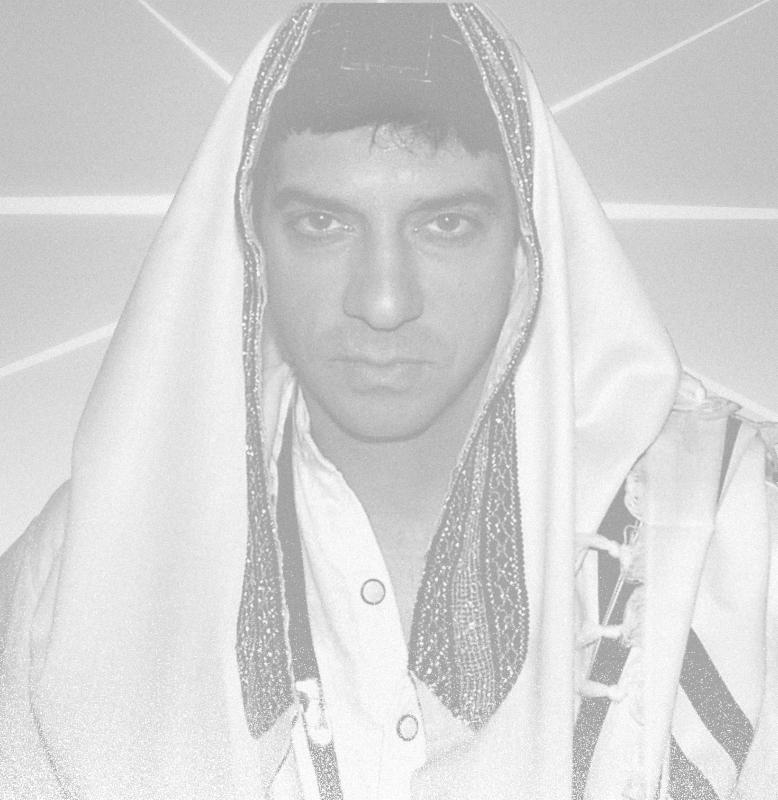 I experienced my first taste of yeshiva learning when I was a twenty-something wanna-be rock star in LA. After perusing an attractive brochure that appeared in the mail, I applied for the all-expenses-paid scholarship to study in Jerusalem. Aish HaTorah provided an incredible curriculum with a dozen brilliant rabbis that taught us hour by hour in an Ottoman Empire study hall perched atop the Old City walls. I considered the millennia-old alleyways comprising the “shuk” my personal playground and had the Western Wall as my front yard. The neophytes were never expected to join the yeshiva prayer services but since I had a fair grasp of the basics from Hebrew School I would often don my tallis (or tallit, meaning a prayer shawl) given to me at my Bar Mitzvah and join the minyan (prayer service.)
I experienced my first taste of yeshiva learning when I was a twenty-something wanna-be rock star in LA. After perusing an attractive brochure that appeared in the mail, I applied for the all-expenses-paid scholarship to study in Jerusalem. Aish HaTorah provided an incredible curriculum with a dozen brilliant rabbis that taught us hour by hour in an Ottoman Empire study hall perched atop the Old City walls. I considered the millennia-old alleyways comprising the “shuk” my personal playground and had the Western Wall as my front yard. The neophytes were never expected to join the yeshiva prayer services but since I had a fair grasp of the basics from Hebrew School I would often don my tallis (or tallit, meaning a prayer shawl) given to me at my Bar Mitzvah and join the minyan (prayer service.) While touching the cool, ancient stones of the Wall, I prayed an abbreviated service on my own since I was already running late for lunch. How could I leave this magical place, this “Jewish Disneyland?” It felt like I had learned more in those four months than in four years at my university. But then there was also that feeling of homesickness, missing my family and longing for my beachside apartment. One by one, my rabbis pulled me aside to discourage me from going back to LA so soon. Particularly Rabbi Weinberg, my beloved Rosh Yeshiva. “C’mon Sam, give us a year,” he implored, looking at me with that trademark gleam in his eye.
While touching the cool, ancient stones of the Wall, I prayed an abbreviated service on my own since I was already running late for lunch. How could I leave this magical place, this “Jewish Disneyland?” It felt like I had learned more in those four months than in four years at my university. But then there was also that feeling of homesickness, missing my family and longing for my beachside apartment. One by one, my rabbis pulled me aside to discourage me from going back to LA so soon. Particularly Rabbi Weinberg, my beloved Rosh Yeshiva. “C’mon Sam, give us a year,” he implored, looking at me with that trademark gleam in his eye.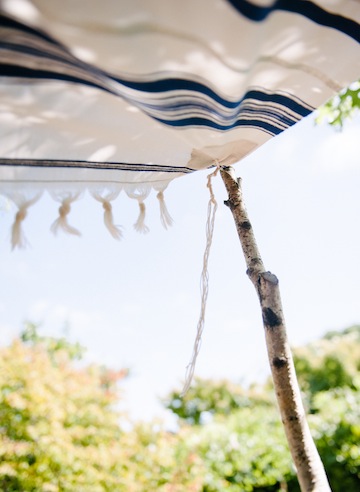 My next connection with a tallis would be at my wedding seven years later. I sent my Israel-bound mom on a mission to purchase the tallis of my dreams. She returned with a simple black and white, super lightweight, extra large garment and “sold” it to my fiancé since the custom is for the wife to give the tallis to her new husband. That sunny Sunday afternoon we stretched it atop four poles and stood underneath as a cavalcade of seven illustrious LA rabbis gave us our blessings. Now whenever I wear it I feel the hug of my wife as well as the warmth of God’s “wings” holding me close.
My next connection with a tallis would be at my wedding seven years later. I sent my Israel-bound mom on a mission to purchase the tallis of my dreams. She returned with a simple black and white, super lightweight, extra large garment and “sold” it to my fiancé since the custom is for the wife to give the tallis to her new husband. That sunny Sunday afternoon we stretched it atop four poles and stood underneath as a cavalcade of seven illustrious LA rabbis gave us our blessings. Now whenever I wear it I feel the hug of my wife as well as the warmth of God’s “wings” holding me close. When I started out in music my primary motivation was to get my songs heard. That primal urge to offer shelter to the melodic offspring of my subconscious led me to open a recording studio, assemble bands, learn theory, practice the piano and take voice lessons. A byproduct of the career that this passion invoked is a desire to offer a path to young musicians who are wrestling with their musical inclinations. Establishing mentorship programs, music retreats and choral and instrumental ensembles is all part of this effort. As a militant music advocate I maintain that basic music education is a crucial part of any modern school curriculum. Somehow that truth seems lost on American administrators, especially in Jewish day schools. When something has to be cut to accommodate shrinking budgets it’s usually not math and English; presently music education in both public and private schools is MIA or at best, piecemeal.
When I started out in music my primary motivation was to get my songs heard. That primal urge to offer shelter to the melodic offspring of my subconscious led me to open a recording studio, assemble bands, learn theory, practice the piano and take voice lessons. A byproduct of the career that this passion invoked is a desire to offer a path to young musicians who are wrestling with their musical inclinations. Establishing mentorship programs, music retreats and choral and instrumental ensembles is all part of this effort. As a militant music advocate I maintain that basic music education is a crucial part of any modern school curriculum. Somehow that truth seems lost on American administrators, especially in Jewish day schools. When something has to be cut to accommodate shrinking budgets it’s usually not math and English; presently music education in both public and private schools is MIA or at best, piecemeal. (AJCF), Judy and her husband Mark picked me up and drove me straight to the festival venue so I could check out the piano and decide on any stage diagram changes. The Music Conservatorium is a modern, cutting-edge music academy with astonishing rehearsal and performance spaces and more grand pianos than I’ve seen under one roof. I was excited to see that I would have a perfectly tuned Steinway concert grand for my show. Pianos like that simply suck the notes out of my fingers. Playing them is effortless, with dynamics that range from floating through a wispy sky to crashing cumulo-nimbus thunder.
(AJCF), Judy and her husband Mark picked me up and drove me straight to the festival venue so I could check out the piano and decide on any stage diagram changes. The Music Conservatorium is a modern, cutting-edge music academy with astonishing rehearsal and performance spaces and more grand pianos than I’ve seen under one roof. I was excited to see that I would have a perfectly tuned Steinway concert grand for my show. Pianos like that simply suck the notes out of my fingers. Playing them is effortless, with dynamics that range from floating through a wispy sky to crashing cumulo-nimbus thunder. I launched on a shaded trail to a beautiful fishing spot in the middle of Sugarloaf Bay. I saw countless exotic birds including trees filled with brilliant parrots, rainbow lorikeets, cockatoos and these crazy crested pigeons. I felt like I was on the set of Avatar, and the complete solitude of the path made me a bit concerned that some wild Pandora beast would come raging through the fern undergrowth. At the terminus I watched a recently retired 51-year-old banker casting his reel for Australian Salmon. He said that they taste nowhere near as good as the Tasmanian variety. Over twenty years working for the same bank and this ex-executive was feeling like he was on the set of Groundhog Day. He felt he had barely escaped with his soul intact…fishing time! We had a relaxed schmooze for a few hours as I ate my bagel, lox and cream cheese Yom Tov seudah (festive meal.)
I launched on a shaded trail to a beautiful fishing spot in the middle of Sugarloaf Bay. I saw countless exotic birds including trees filled with brilliant parrots, rainbow lorikeets, cockatoos and these crazy crested pigeons. I felt like I was on the set of Avatar, and the complete solitude of the path made me a bit concerned that some wild Pandora beast would come raging through the fern undergrowth. At the terminus I watched a recently retired 51-year-old banker casting his reel for Australian Salmon. He said that they taste nowhere near as good as the Tasmanian variety. Over twenty years working for the same bank and this ex-executive was feeling like he was on the set of Groundhog Day. He felt he had barely escaped with his soul intact…fishing time! We had a relaxed schmooze for a few hours as I ate my bagel, lox and cream cheese Yom Tov seudah (festive meal.) walked until we couldn’t walk anymore, shot plenty of pictures that will likely not come out and then found one of the few establishments where this kosher consumer could eat. I sent sleepy Naomi home since I was fired up with energy to explore more of the town. Thanks to an excellent light rail system I felt perfectly confident that I could find my way back to Chatswood.
walked until we couldn’t walk anymore, shot plenty of pictures that will likely not come out and then found one of the few establishments where this kosher consumer could eat. I sent sleepy Naomi home since I was fired up with energy to explore more of the town. Thanks to an excellent light rail system I felt perfectly confident that I could find my way back to Chatswood. started the proceedings with a rousing havdalah and sing-along. Now I would be put to the test. The eighty candidates assembled had notebooks with several of my SATB arrangements. For the next sixty hours I would conduct the whole group in “Big Sing” rehearsals, form my own twenty-five voice Rock It Choir, teach workshops and give concerts both for the group and a gala show for the public. I must say that conducting the first song that Saturday night was nerve wracking. I started working on the parts section by section and soon surrendered to the joy of hearing my music sung. At first I waved my hands stiffly but then closed my eyes and “saw” their entrances in my heart rather than on the page. By the time we had my Blessing song down I felt enveloped in a sonorous angelic wind that responded to my every gesture. Wow.
started the proceedings with a rousing havdalah and sing-along. Now I would be put to the test. The eighty candidates assembled had notebooks with several of my SATB arrangements. For the next sixty hours I would conduct the whole group in “Big Sing” rehearsals, form my own twenty-five voice Rock It Choir, teach workshops and give concerts both for the group and a gala show for the public. I must say that conducting the first song that Saturday night was nerve wracking. I started working on the parts section by section and soon surrendered to the joy of hearing my music sung. At first I waved my hands stiffly but then closed my eyes and “saw” their entrances in my heart rather than on the page. By the time we had my Blessing song down I felt enveloped in a sonorous angelic wind that responded to my every gesture. Wow. The next full day had more of the same: choir performances, rehearsals and workshops, culminating in a concert that was staged mostly for our own group and friends. We all felt a combined sense of satisfaction and relief, amazed at what we were able to accomplish in two and a half brilliant days. I had made a personal commitment to be there 100% for the festival and did not attempt to sneak out when my presence wasn’t necessary. That said, when it ended, I left the final cocktail hour with a few of my choir members to enjoy the parts of Vivid Sydney that I had missed. One of the grand illuminated buildings we passed required a human conductor to set the pace for the extraordinary light show. We boarded a ferry and got an aquatic view of the Opera House and downtown ablaze with colors intensified by the reflections on the water. Then to Darling Harbor where a Bellagio hotel-style fountain display was paired with a holographic film projected on a wall of mist. Right in the middle of the show the rain came down but no one left! Hundreds of umbrellas immediately opened providing shelter for all. These Sydneyites come prepared! Half the crowd was Asian; I was told by a cab driver that their population has swollen to a half a million residents in recent years.
The next full day had more of the same: choir performances, rehearsals and workshops, culminating in a concert that was staged mostly for our own group and friends. We all felt a combined sense of satisfaction and relief, amazed at what we were able to accomplish in two and a half brilliant days. I had made a personal commitment to be there 100% for the festival and did not attempt to sneak out when my presence wasn’t necessary. That said, when it ended, I left the final cocktail hour with a few of my choir members to enjoy the parts of Vivid Sydney that I had missed. One of the grand illuminated buildings we passed required a human conductor to set the pace for the extraordinary light show. We boarded a ferry and got an aquatic view of the Opera House and downtown ablaze with colors intensified by the reflections on the water. Then to Darling Harbor where a Bellagio hotel-style fountain display was paired with a holographic film projected on a wall of mist. Right in the middle of the show the rain came down but no one left! Hundreds of umbrellas immediately opened providing shelter for all. These Sydneyites come prepared! Half the crowd was Asian; I was told by a cab driver that their population has swollen to a half a million residents in recent years. Tuesday was my one and only day off during this two week tour. I was excited for an extensive hiking tour of the renown Blue Mountains. Sure enough, I cranked open my floor to ceiling blinds to see that it was pouring rain. I caught the train to the North to meet Judy’s husband, sax man Mark Ginsburg at the Linfield station where we took shelter from the drizzle under the awning of an amazing coffee joint called Café Feoh. These Australians sure take their coffee seriously! When Sydney-based Cantor Shimon Farkas came to LA before Passover I offered to meet him at Coffee Bean. He said, “No, I’m going to take you to a place in Beverly Hills that serves REAL coffee.” Well, I was slowly becoming an aficionado and can safely say that that morning’s mocha was the best I’ve ever had. No sugar required! We walked back to Mark’s home while the clouds dissipated and played some groovy piano-soprano sax improvised meanderings and then boarded his zippy Audi Quattro for West Head. This would be a more coastal (and hopefully drier) version of the hike we originally planned. We wound through a gorgeous wilderness area taking care not set off any photo speed traps on the way. I wouldn’t survive a town with such tightly controlled traffic enforcement! We then embarked on a five-mile loop that followed bluffs to beaches and featured caves and ancient kitchens with aboriginal art.
Tuesday was my one and only day off during this two week tour. I was excited for an extensive hiking tour of the renown Blue Mountains. Sure enough, I cranked open my floor to ceiling blinds to see that it was pouring rain. I caught the train to the North to meet Judy’s husband, sax man Mark Ginsburg at the Linfield station where we took shelter from the drizzle under the awning of an amazing coffee joint called Café Feoh. These Australians sure take their coffee seriously! When Sydney-based Cantor Shimon Farkas came to LA before Passover I offered to meet him at Coffee Bean. He said, “No, I’m going to take you to a place in Beverly Hills that serves REAL coffee.” Well, I was slowly becoming an aficionado and can safely say that that morning’s mocha was the best I’ve ever had. No sugar required! We walked back to Mark’s home while the clouds dissipated and played some groovy piano-soprano sax improvised meanderings and then boarded his zippy Audi Quattro for West Head. This would be a more coastal (and hopefully drier) version of the hike we originally planned. We wound through a gorgeous wilderness area taking care not set off any photo speed traps on the way. I wouldn’t survive a town with such tightly controlled traffic enforcement! We then embarked on a five-mile loop that followed bluffs to beaches and featured caves and ancient kitchens with aboriginal art. synchronicity that left the audience breathless. I noted that the crowd was the best behaved that I had ever seen. No catcalls, no standing ovations, just polite, warm applause all night. I befriended the blokes around me and they made sure that I had a beverage at intermission and wouldn’t accept my money. After the show I walked along the waterfront to the Opera House bar where I met members of the Swiss thrash metal band Coroner who were on tour down under. No, I had never heard of them either. It’s remarkable what nice guys they were given that they blast death rock for slamdancing skinhead crowds as a matter of habit. I took the train to my hotel via the nightspot Kings Cross, the closest stop to Woolloomooloo. At this late hour, on a Tuesday night, there wasn’t much action except for hash-smoking backpackers lighting up outside their hostels. That night I turned on the TV for the first time. Plenty of Australian shows with amusing Australian commercials. Nice to see that there is significant broadcasting base of home-brew content and that Aussies are not dependent on Hollywood for entertainment. That said, most of the typical American fare could be found for those homesick for Yank accents.
synchronicity that left the audience breathless. I noted that the crowd was the best behaved that I had ever seen. No catcalls, no standing ovations, just polite, warm applause all night. I befriended the blokes around me and they made sure that I had a beverage at intermission and wouldn’t accept my money. After the show I walked along the waterfront to the Opera House bar where I met members of the Swiss thrash metal band Coroner who were on tour down under. No, I had never heard of them either. It’s remarkable what nice guys they were given that they blast death rock for slamdancing skinhead crowds as a matter of habit. I took the train to my hotel via the nightspot Kings Cross, the closest stop to Woolloomooloo. At this late hour, on a Tuesday night, there wasn’t much action except for hash-smoking backpackers lighting up outside their hostels. That night I turned on the TV for the first time. Plenty of Australian shows with amusing Australian commercials. Nice to see that there is significant broadcasting base of home-brew content and that Aussies are not dependent on Hollywood for entertainment. That said, most of the typical American fare could be found for those homesick for Yank accents. The other night over tofu curry my wife was explaining the concept of fiscal vs. calendar years to my kids. Times they are a-changing: my seventeen-year-old Jesse just opened his own E-Trade account so that he can play the market on his own. He used to hunt bugs in the backyard; now he’s studying corporate cash flow! She told him that most individuals in the US seem to follow the January to December calendar model, making January the back to work month following a holiday vacation and a drunken New Years Eve. My dad’s swimwear business went summer to summer since we shipped everything by May and then had to figure out what to do the next season.
The other night over tofu curry my wife was explaining the concept of fiscal vs. calendar years to my kids. Times they are a-changing: my seventeen-year-old Jesse just opened his own E-Trade account so that he can play the market on his own. He used to hunt bugs in the backyard; now he’s studying corporate cash flow! She told him that most individuals in the US seem to follow the January to December calendar model, making January the back to work month following a holiday vacation and a drunken New Years Eve. My dad’s swimwear business went summer to summer since we shipped everything by May and then had to figure out what to do the next season. began with overt miracles to God’s working subtly behind the scene. Imagine that you are imprisoned and have a prison guard right outside the cell. Obviously with the watchful guard on the scene you are on your best behavior. When the guard goes on rounds, however, that’s when you can do headstands, scrawl graffiti or go back to digging that escape hole with a spoon. The God of Nissan is an overwhelming presence that limits our freedom of choice, whereas the God of Adar gives us the space to express the fullness of our human gift of choice. I believe that all history is following this same principle and more than ever we live in age where we are stratified into believers and “secular.” That intelligent people can deny God’s presence fills me with mirth. Just look at how powerful God is, like the guard on his rounds, giving us the freedom to perceive God, or not. Amazing!
began with overt miracles to God’s working subtly behind the scene. Imagine that you are imprisoned and have a prison guard right outside the cell. Obviously with the watchful guard on the scene you are on your best behavior. When the guard goes on rounds, however, that’s when you can do headstands, scrawl graffiti or go back to digging that escape hole with a spoon. The God of Nissan is an overwhelming presence that limits our freedom of choice, whereas the God of Adar gives us the space to express the fullness of our human gift of choice. I believe that all history is following this same principle and more than ever we live in age where we are stratified into believers and “secular.” That intelligent people can deny God’s presence fills me with mirth. Just look at how powerful God is, like the guard on his rounds, giving us the freedom to perceive God, or not. Amazing!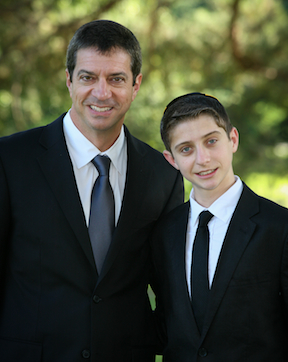 The night before my son Jesse left for summer camp in Wisconsin we were sitting around the dinner table discussing discipline. We turned to our sixteen-year-old counselor-in-training to get his feedback on our parenting style. Jesse commented, “Dad, you have never punished me.” “Really?” I responded. “Yep. Never.” I asked my wife if this is a good thing. She responded, “probably not.” I guess I will be remembered as an “old softy” and clearly Jesse has the healthy quality of omitting certain memories. So how do I enforce discipline? My technique seems to be treating my kids like adults and making consequences real. Indeed, there are ground rules in our mostly peaceful household. If they are broken, our kids immediately sense that the placid order of our micro-universe has been altered. Yes, they can keep pushing or nudging and drive us crazy, but why do that? It doesn’t get them anywhere.
The night before my son Jesse left for summer camp in Wisconsin we were sitting around the dinner table discussing discipline. We turned to our sixteen-year-old counselor-in-training to get his feedback on our parenting style. Jesse commented, “Dad, you have never punished me.” “Really?” I responded. “Yep. Never.” I asked my wife if this is a good thing. She responded, “probably not.” I guess I will be remembered as an “old softy” and clearly Jesse has the healthy quality of omitting certain memories. So how do I enforce discipline? My technique seems to be treating my kids like adults and making consequences real. Indeed, there are ground rules in our mostly peaceful household. If they are broken, our kids immediately sense that the placid order of our micro-universe has been altered. Yes, they can keep pushing or nudging and drive us crazy, but why do that? It doesn’t get them anywhere.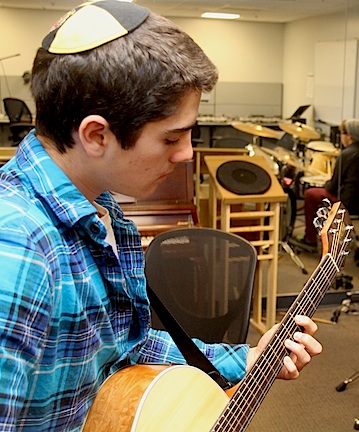 consistently repeating. All three of our children take lessons on their respective musical instruments and must practice regularly if they want to continue. We encourage them to find friends that are trustworthy and do not run hot or cold based on ever-mutating peer popularity contests. We teach follow-through and expect them to meet the obligations they have taken on. I regularly emphasize the teaching that the holy ark was lined with gold leaf on the outside AND on the inside. Why waste precious gold on the inside? The lesson in a nutshell is that being consistent isn’t just an outward attribute; a true tzadik is holy on the inside and the outside. Learning to be consistent as kids makes them better sons and daughters and I believe will make them better employees, employers and most importantly, spouses.
consistently repeating. All three of our children take lessons on their respective musical instruments and must practice regularly if they want to continue. We encourage them to find friends that are trustworthy and do not run hot or cold based on ever-mutating peer popularity contests. We teach follow-through and expect them to meet the obligations they have taken on. I regularly emphasize the teaching that the holy ark was lined with gold leaf on the outside AND on the inside. Why waste precious gold on the inside? The lesson in a nutshell is that being consistent isn’t just an outward attribute; a true tzadik is holy on the inside and the outside. Learning to be consistent as kids makes them better sons and daughters and I believe will make them better employees, employers and most importantly, spouses.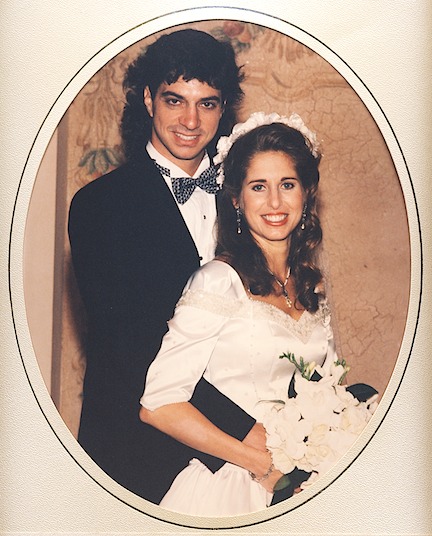 reasonable. In other words, not firing on all cylinders at the starting line if that is a pace we can’t maintain. During that first year of marriagewe minimize outside distractions to find a point of deep connection and passion, thereby allowing one’s spouse to feel secure that the pattern of love and duty established is not going to diminish. The true aphrodisiac in a loving relationship is consistency: honesty and reliability that builds real trust and thereby builds intimacy.
reasonable. In other words, not firing on all cylinders at the starting line if that is a pace we can’t maintain. During that first year of marriagewe minimize outside distractions to find a point of deep connection and passion, thereby allowing one’s spouse to feel secure that the pattern of love and duty established is not going to diminish. The true aphrodisiac in a loving relationship is consistency: honesty and reliability that builds real trust and thereby builds intimacy.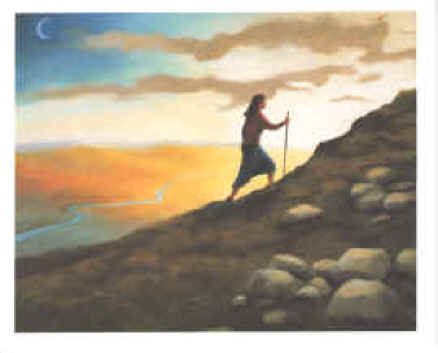 writing and tackle them one by one. Too big a mountain and we’ll never try to climb it. Another method is to bring God into the picture. For example, when I have a creative roadblock I ask God for a new song before I go to sleep. I am rarely let down. Some folks feel funny praying on their own behalf. Establish your small goal and ask for God’s help in achieving it, in the same language you would use asking a friend to do you a favor. Finally, allow yourself a sense of triumph when you accomplish each step and reward yourself for being consistent. For me, chocolate ice cream is a great perk. In fact, I think I’ll use that one right now as a reward for getting this essay written.
writing and tackle them one by one. Too big a mountain and we’ll never try to climb it. Another method is to bring God into the picture. For example, when I have a creative roadblock I ask God for a new song before I go to sleep. I am rarely let down. Some folks feel funny praying on their own behalf. Establish your small goal and ask for God’s help in achieving it, in the same language you would use asking a friend to do you a favor. Finally, allow yourself a sense of triumph when you accomplish each step and reward yourself for being consistent. For me, chocolate ice cream is a great perk. In fact, I think I’ll use that one right now as a reward for getting this essay written. My wife buys the smallest packages of food in order to conserve space in our three-shelf pantry. When I open it on any given morning and find one of those 10oz. boxes of Cheerios I cringe and dream of a time when we can shop at Costco. Furthermore, I insist on having a plethora of cereal options so that I can mix and match my breakfast. She retaliates by buying the mini jars of peanut butter. I get the same grief when it comes to my closet full of clothes. She argues that I have more than she does and calls me a pack rat. I respond that I like lots of choices and see no reason to throw my old favorites away, as long as they still fit. So too with my CD collection, the gear in my music studio, my library. Am I too attached to material things? Yes. But I prefer to give my obsession another name.
My wife buys the smallest packages of food in order to conserve space in our three-shelf pantry. When I open it on any given morning and find one of those 10oz. boxes of Cheerios I cringe and dream of a time when we can shop at Costco. Furthermore, I insist on having a plethora of cereal options so that I can mix and match my breakfast. She retaliates by buying the mini jars of peanut butter. I get the same grief when it comes to my closet full of clothes. She argues that I have more than she does and calls me a pack rat. I respond that I like lots of choices and see no reason to throw my old favorites away, as long as they still fit. So too with my CD collection, the gear in my music studio, my library. Am I too attached to material things? Yes. But I prefer to give my obsession another name. correctness. We live at a time when conscientious Americans are trying to reduce our carbon footprints, bringing canvas bags to the supermarket, driving hybrids and recycling. I’m not suggesting that we abandon these astute practices, God forbid! I am suggesting that we distinguish between minimizing our consumption and maximizing our joy.
correctness. We live at a time when conscientious Americans are trying to reduce our carbon footprints, bringing canvas bags to the supermarket, driving hybrids and recycling. I’m not suggesting that we abandon these astute practices, God forbid! I am suggesting that we distinguish between minimizing our consumption and maximizing our joy. “magnets”; if we prove that we know how to do the right thing in any situation, clearly God can trust us with abundance. God aches to give us more, but we have to CHOOSE the relationship, we have to ASK for what we want and we have to BUILD ourselves into individuals who can handle abundance.
“magnets”; if we prove that we know how to do the right thing in any situation, clearly God can trust us with abundance. God aches to give us more, but we have to CHOOSE the relationship, we have to ASK for what we want and we have to BUILD ourselves into individuals who can handle abundance. and should use our Jewish institutions to enhance our connection rather than provide a glass ceiling to our growth. My friend David Suissa comments that in religious life we decide, “that’s not what I do” and then defend that stance religiously! We argue: why try a mitzvah one time if it makes us a “hypocrite” for not sticking with it? As Jews, our access to shefa is closely aligned with the mitzvot that we take on. Take a chance! Be a hypocrite once in a while. Suissa quotes Rabbi Shlomo Schwartz as saying “God counts only the mitzvahs you do, not the ones you don’t.”
and should use our Jewish institutions to enhance our connection rather than provide a glass ceiling to our growth. My friend David Suissa comments that in religious life we decide, “that’s not what I do” and then defend that stance religiously! We argue: why try a mitzvah one time if it makes us a “hypocrite” for not sticking with it? As Jews, our access to shefa is closely aligned with the mitzvot that we take on. Take a chance! Be a hypocrite once in a while. Suissa quotes Rabbi Shlomo Schwartz as saying “God counts only the mitzvahs you do, not the ones you don’t.”
 trying to hold onto my kids just like I’m trying to hold onto this water.” As I reached into the river for handfuls of water it just escaped through the cracks in my fingers and continued on its inevitable descent. I sobbed tears of sadness and relief as I acknowledged this bittersweet pain that I have been carrying inside.
trying to hold onto my kids just like I’m trying to hold onto this water.” As I reached into the river for handfuls of water it just escaped through the cracks in my fingers and continued on its inevitable descent. I sobbed tears of sadness and relief as I acknowledged this bittersweet pain that I have been carrying inside.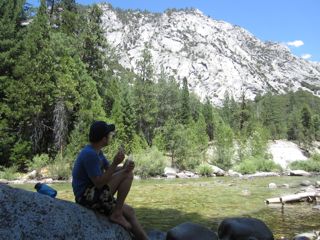 God’s ability to sustain me and keep my family together is crumbling. Rather than serving as an example of holiness and living at peace with the Universe, open to whatever God has in store, I am a frightened child trying to protect all my toys from the neighborhood bully.
God’s ability to sustain me and keep my family together is crumbling. Rather than serving as an example of holiness and living at peace with the Universe, open to whatever God has in store, I am a frightened child trying to protect all my toys from the neighborhood bully. clearing in the forest where we could peer into the pitch-black new moon sky with a sixteen-inch mirror telescope. My friends, I saw a global cluster, the Whirlpool Galaxy and “eye of God” Ring Nebula with my own eyes! All of these celestial bodies have a specific place in the universe, predictable orbits that they follow, so reliable that we can use their light to steer our ships through the night. All of creation is on a path, with atoms in ordered arrays, electrons and protons spinning around nuclei, trees arching towards the sun, ants marching in single file, pelicans drafting off each other’s wingtips. Why should I dread any aspect of my own path, my lifecycle? Thankfully the Jewish People have been given the gift of a long and winding road of 613 mitzvot, in a system called Halacha, the path. Jewish law can be seen as oppressive and burdensome, or as a collection of helpful spiritual signposts to keep us joyful and inspired on the annual orbit of the Jewish year.
clearing in the forest where we could peer into the pitch-black new moon sky with a sixteen-inch mirror telescope. My friends, I saw a global cluster, the Whirlpool Galaxy and “eye of God” Ring Nebula with my own eyes! All of these celestial bodies have a specific place in the universe, predictable orbits that they follow, so reliable that we can use their light to steer our ships through the night. All of creation is on a path, with atoms in ordered arrays, electrons and protons spinning around nuclei, trees arching towards the sun, ants marching in single file, pelicans drafting off each other’s wingtips. Why should I dread any aspect of my own path, my lifecycle? Thankfully the Jewish People have been given the gift of a long and winding road of 613 mitzvot, in a system called Halacha, the path. Jewish law can be seen as oppressive and burdensome, or as a collection of helpful spiritual signposts to keep us joyful and inspired on the annual orbit of the Jewish year.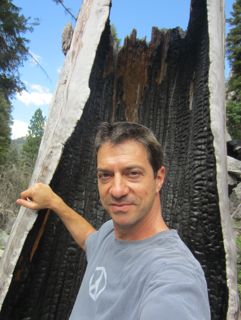 amazing tools to stay on track but I can testify that it is possible to live within halacha and become a robot. I think the key is focusing on filling our lives with kindness to others and gratitude to our Creator. I am grateful for the time God has allotted me to be with my children. I am grateful for vacations and National Parks. I am grateful for stars, rivers and friends. I am grateful for the air that I breathe. I am grateful for my wife, my children, my parents, my extended family. I am grateful to be Jewish. I am grateful for skateboards, skis, guitars and gravity. I am grateful for challenges to overcome. I pray that all of us learn the art of letting go, prying open our hearts to the messages of Heaven and finding our true path. Thanks to a river, a telescope and a new friend, I am a bit closer to finding my own.
amazing tools to stay on track but I can testify that it is possible to live within halacha and become a robot. I think the key is focusing on filling our lives with kindness to others and gratitude to our Creator. I am grateful for the time God has allotted me to be with my children. I am grateful for vacations and National Parks. I am grateful for stars, rivers and friends. I am grateful for the air that I breathe. I am grateful for my wife, my children, my parents, my extended family. I am grateful to be Jewish. I am grateful for skateboards, skis, guitars and gravity. I am grateful for challenges to overcome. I pray that all of us learn the art of letting go, prying open our hearts to the messages of Heaven and finding our true path. Thanks to a river, a telescope and a new friend, I am a bit closer to finding my own.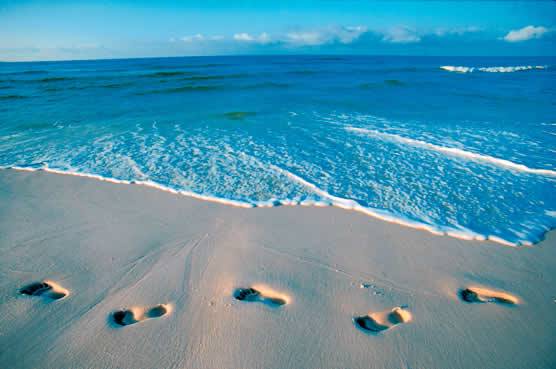 My cherished custom every time I land in Florida is to head straight to the beach and jump in the glassy, warm water. The shock of the Pacific chill is absent…no wetsuit required…and the white sand unfolds to the North for hundreds of miles. Upon arriving on this last trip with my fellow Jewish singer and good buddy Todd Herzog, we dropped our bags at the beachfront hotel and davened a peaceful mincha (afternoon prayer) before jumping into the shallow blue-green playground. As we pondered the pelicans and sandpipers, Todd asked me some penetrating questions about why one would want to say the same exact words three times a day. He was curious what I get out of it. Am I was focusing on just getting the words out or am I actually thinking about meanings? Where do I add my own thoughts? And what happens on Shabbat when we stop making requests from God…what am I praying for then?
My cherished custom every time I land in Florida is to head straight to the beach and jump in the glassy, warm water. The shock of the Pacific chill is absent…no wetsuit required…and the white sand unfolds to the North for hundreds of miles. Upon arriving on this last trip with my fellow Jewish singer and good buddy Todd Herzog, we dropped our bags at the beachfront hotel and davened a peaceful mincha (afternoon prayer) before jumping into the shallow blue-green playground. As we pondered the pelicans and sandpipers, Todd asked me some penetrating questions about why one would want to say the same exact words three times a day. He was curious what I get out of it. Am I was focusing on just getting the words out or am I actually thinking about meanings? Where do I add my own thoughts? And what happens on Shabbat when we stop making requests from God…what am I praying for then?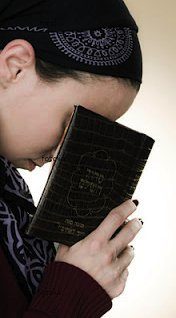 central prayer nearly 2500 years ago…and it was clearly already in use when they did so. Among their ranks were several sages of prophetic stature. They boiled down God’s will for the Jewish People in eighteen (later nineteen) crucial categories. When we repeat this menu of our deepest needs, we enact our partnership with God in bringing them to fruition. So central is this prayer to our existence that it is simply referred to as tefila (THE prayer) when discussed in the Talmud. The Sh’ma and psalms are important, but the Amidah is IT. I think Rashi says it best when he explains that l’hitpalel, or to pray, means to dream or think ultimate thoughts. We utter nineteen dreams for humanity and those dreams become part of us, defining our aspirations and clarifying our service to God.
central prayer nearly 2500 years ago…and it was clearly already in use when they did so. Among their ranks were several sages of prophetic stature. They boiled down God’s will for the Jewish People in eighteen (later nineteen) crucial categories. When we repeat this menu of our deepest needs, we enact our partnership with God in bringing them to fruition. So central is this prayer to our existence that it is simply referred to as tefila (THE prayer) when discussed in the Talmud. The Sh’ma and psalms are important, but the Amidah is IT. I think Rashi says it best when he explains that l’hitpalel, or to pray, means to dream or think ultimate thoughts. We utter nineteen dreams for humanity and those dreams become part of us, defining our aspirations and clarifying our service to God.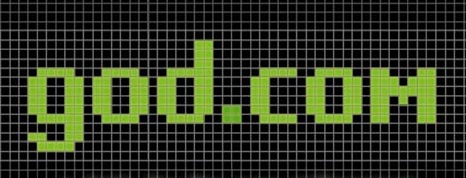 there’s any place that you want to deeply focus and use the formulaic words of the millennia, this is it.
there’s any place that you want to deeply focus and use the formulaic words of the millennia, this is it.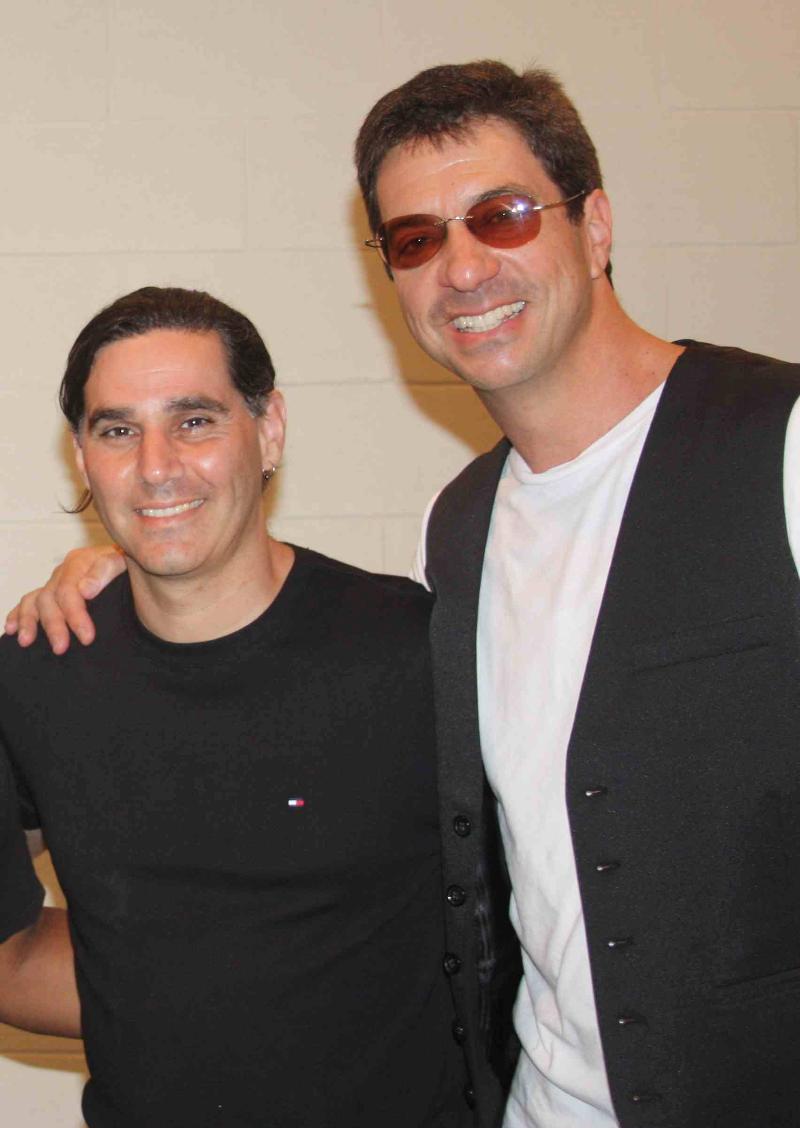

 Allow me to take you on a tour of adults seated in this sweet portrait, from oldest to youngest. My dad, seated on the couch, is looking somewhat haggard thanks to the 15 grandchildren that invaded his peaceful Pacific Palisades home for the week of Sukkot. He was raised in a WWII-era Bronx family that moved in LA while he was a teenager. He went to LA High, rebelled and joined the army instead of going to college and then took over a division of his dad’s garment company. He went from his Orthodox upbringing to eventually join one of the largest Conservative synagogues in LA, Sinai Temple, the congregation in which I grew up. Nowadays he regularly leins the Torah for his local Chabad and actively engages in the passion of his retirement years: studying and teaching Jewish history.
Allow me to take you on a tour of adults seated in this sweet portrait, from oldest to youngest. My dad, seated on the couch, is looking somewhat haggard thanks to the 15 grandchildren that invaded his peaceful Pacific Palisades home for the week of Sukkot. He was raised in a WWII-era Bronx family that moved in LA while he was a teenager. He went to LA High, rebelled and joined the army instead of going to college and then took over a division of his dad’s garment company. He went from his Orthodox upbringing to eventually join one of the largest Conservative synagogues in LA, Sinai Temple, the congregation in which I grew up. Nowadays he regularly leins the Torah for his local Chabad and actively engages in the passion of his retirement years: studying and teaching Jewish history. I’m sharing this gory detail to point out that in spite of our many differences we find common ground and celebrate our love for one another. Yes, there are frustrating moments like dealing with degrees of kashrut on Pesach and accepted sleeve length. Certain cousins hug the opposite sex, others can’t be touched. We have to negotiate how to attend extended family simchas when they fall on Shabbat but we ALWAYS go. The cousins may come from three countries and dress differently but perceive they are one family. Jennifer told me that her kids went into mourning when their Chassidic cousins returned to Israel. We know that together we are strong and we need desperately each other and we have far more in common than those details that divide us. Sound familiar? This is the story of the Jewish people. We are like five fingers on one hand.
I’m sharing this gory detail to point out that in spite of our many differences we find common ground and celebrate our love for one another. Yes, there are frustrating moments like dealing with degrees of kashrut on Pesach and accepted sleeve length. Certain cousins hug the opposite sex, others can’t be touched. We have to negotiate how to attend extended family simchas when they fall on Shabbat but we ALWAYS go. The cousins may come from three countries and dress differently but perceive they are one family. Jennifer told me that her kids went into mourning when their Chassidic cousins returned to Israel. We know that together we are strong and we need desperately each other and we have far more in common than those details that divide us. Sound familiar? This is the story of the Jewish people. We are like five fingers on one hand. with the punishment of the perpetrators of this desecration. They cannot continue to abuse the system and avoid the consequences of the ripple effect of their insensitivity. One of the basic seven laws of humanity is to set up a system of courts and uphold justice. Israeli police cannot tiptoe around the offenders for fear of Charedi riots. There must be teeth in the punishment of hate crimes for us to hold up our heads up as a Light unto Nations. As the Midrash says, “Whoever is kind to the cruel will end up being cruel to the kind.” Rabbi Yitzchak Schochet of the UK stated, “We must be intolerant in order to defend tolerance, or unkind in order to defend kindness, or hateful in order to defend what we love. Such ‘acts of terror’ have no place in any democratic society, let alone a Jewish State, whose “ways are kind ways, and all her paths are peace.”
with the punishment of the perpetrators of this desecration. They cannot continue to abuse the system and avoid the consequences of the ripple effect of their insensitivity. One of the basic seven laws of humanity is to set up a system of courts and uphold justice. Israeli police cannot tiptoe around the offenders for fear of Charedi riots. There must be teeth in the punishment of hate crimes for us to hold up our heads up as a Light unto Nations. As the Midrash says, “Whoever is kind to the cruel will end up being cruel to the kind.” Rabbi Yitzchak Schochet of the UK stated, “We must be intolerant in order to defend tolerance, or unkind in order to defend kindness, or hateful in order to defend what we love. Such ‘acts of terror’ have no place in any democratic society, let alone a Jewish State, whose “ways are kind ways, and all her paths are peace.” the rare gift of speaking about spiritual subjects close to my heart to students who were attentive and hungry for the information. I enjoyed the chance to hear both the veterans in Jewish music perform in addition to sampling the hot, upcoming talent. I went to amazing lectures, relished in stories from master storytellers and listened in wonderment to a fifty-voice choir that formed over the course of the conference. And every night, from midnight till 3am, the musician insomniacs gathered in a “kumzitz mafia” jam session of outrageous proportions.
the rare gift of speaking about spiritual subjects close to my heart to students who were attentive and hungry for the information. I enjoyed the chance to hear both the veterans in Jewish music perform in addition to sampling the hot, upcoming talent. I went to amazing lectures, relished in stories from master storytellers and listened in wonderment to a fifty-voice choir that formed over the course of the conference. And every night, from midnight till 3am, the musician insomniacs gathered in a “kumzitz mafia” jam session of outrageous proportions. this twenty-year odyssey as a Jewish composer. These are the community leaders who have rallied to bring me to their congregations, who cherish my CDs, who share my music with everyone they know. Many of them met me when I was single and have followed my life through my engagement, marriage and rollercoaster experience as the father of three. Scarcely a CAJE meal goes by without my having to break out pictures of the family.
this twenty-year odyssey as a Jewish composer. These are the community leaders who have rallied to bring me to their congregations, who cherish my CDs, who share my music with everyone they know. Many of them met me when I was single and have followed my life through my engagement, marriage and rollercoaster experience as the father of three. Scarcely a CAJE meal goes by without my having to break out pictures of the family. getting invitations to perform out of town. Amazing! This year NewCAJE gave me a taste of new artists Noah Aronson and Max Jared, among others, about whom I will rave and support in their journeys.
getting invitations to perform out of town. Amazing! This year NewCAJE gave me a taste of new artists Noah Aronson and Max Jared, among others, about whom I will rave and support in their journeys. that they return is the camaraderie. There is no price tag one can put on belonging to such an esteemed, generous family. Tragically, teachers are usually on the low end of the socio-economic totem pole. The individuals that we empower to bring the newest generations into the fold can barely afford to live in the neighborhoods of the synagogues they serve. CAJE gives these righteous individuals a chance to stand up and be recognized and appreciated. It’s renewing, refreshing and rewarding. Some chastise the organization and say it’s nothing more than Jewish summer camp. But if summer camp is the “great white hope” for our kids, then why can’t the teachers of our students have their moment in the sun?
that they return is the camaraderie. There is no price tag one can put on belonging to such an esteemed, generous family. Tragically, teachers are usually on the low end of the socio-economic totem pole. The individuals that we empower to bring the newest generations into the fold can barely afford to live in the neighborhoods of the synagogues they serve. CAJE gives these righteous individuals a chance to stand up and be recognized and appreciated. It’s renewing, refreshing and rewarding. Some chastise the organization and say it’s nothing more than Jewish summer camp. But if summer camp is the “great white hope” for our kids, then why can’t the teachers of our students have their moment in the sun?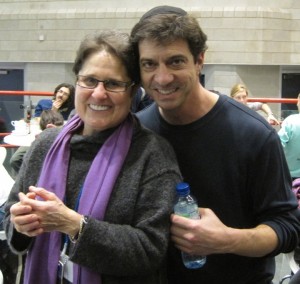
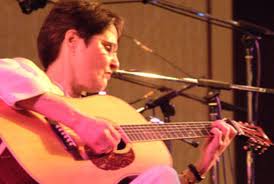 Debbie’s last official concert was everything that we fans wanted. All the hits, the crowd singing at the top of our lungs, tears aplenty at her epic ballads. Her voice was frail but she still hit the notes. Her humor was spontaneous and spot on and of course her trademark issues with guitar tuning created several classic improvised moments. Our beloved EJ Cohen was there to interpret both of our shows with her flowing, artful bi-lingual sign language. Debbie asked that no one video, photograph or facebook about the show. Just to be present, to be with her. Of course she sang Misheberach for us and then us for her. Little did we know.
Debbie’s last official concert was everything that we fans wanted. All the hits, the crowd singing at the top of our lungs, tears aplenty at her epic ballads. Her voice was frail but she still hit the notes. Her humor was spontaneous and spot on and of course her trademark issues with guitar tuning created several classic improvised moments. Our beloved EJ Cohen was there to interpret both of our shows with her flowing, artful bi-lingual sign language. Debbie asked that no one video, photograph or facebook about the show. Just to be present, to be with her. Of course she sang Misheberach for us and then us for her. Little did we know.